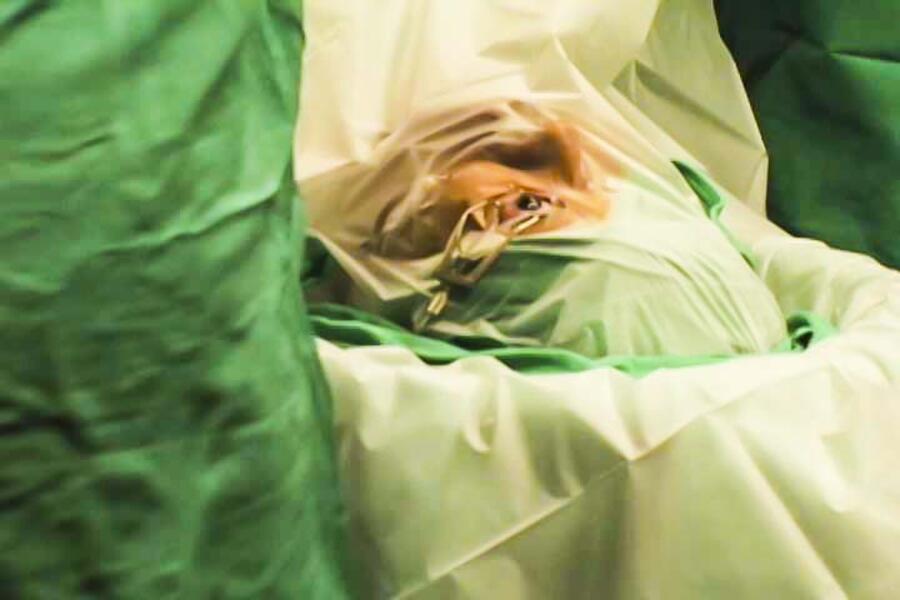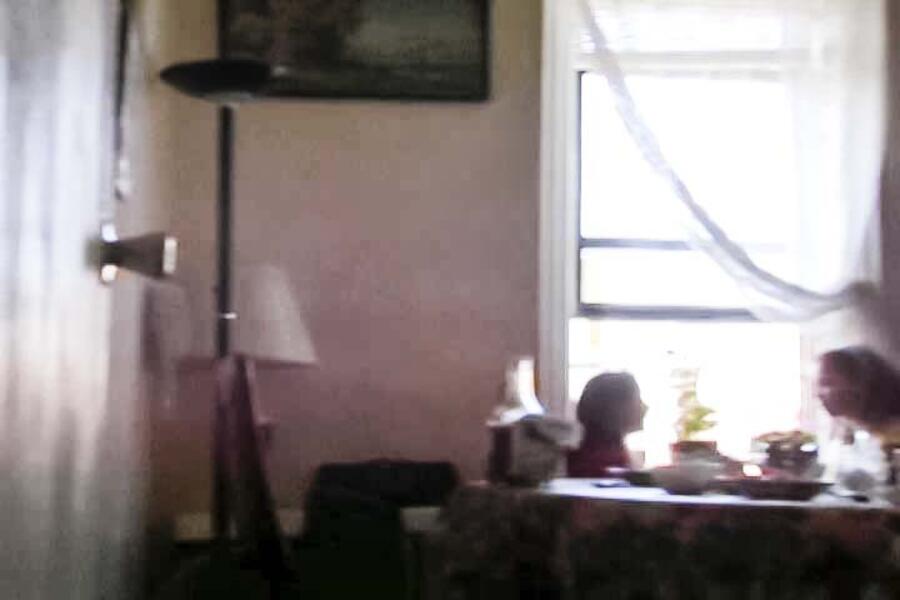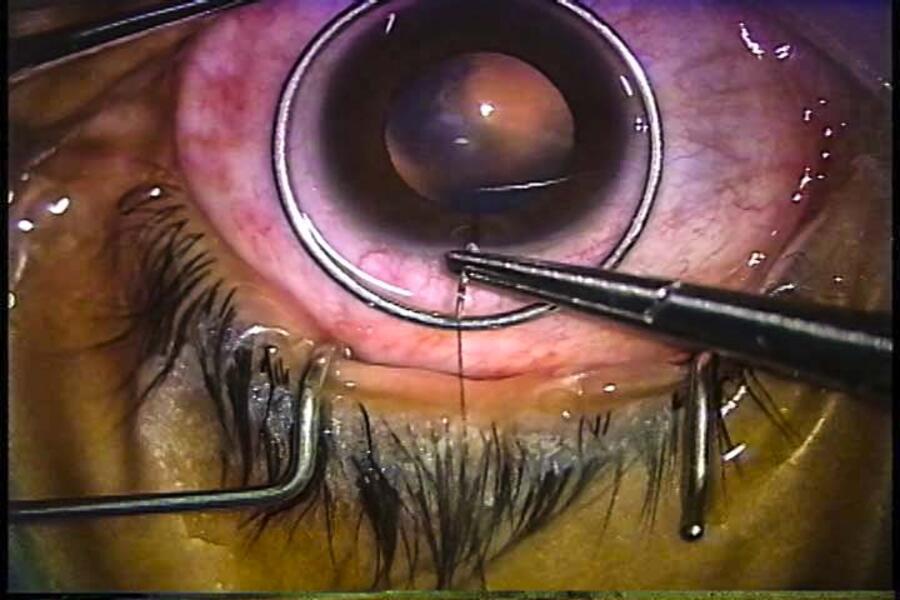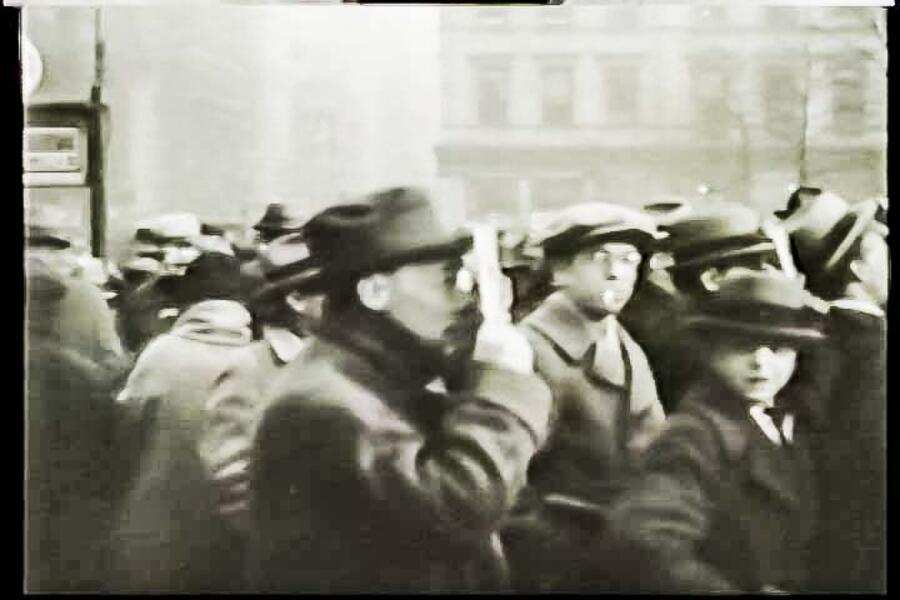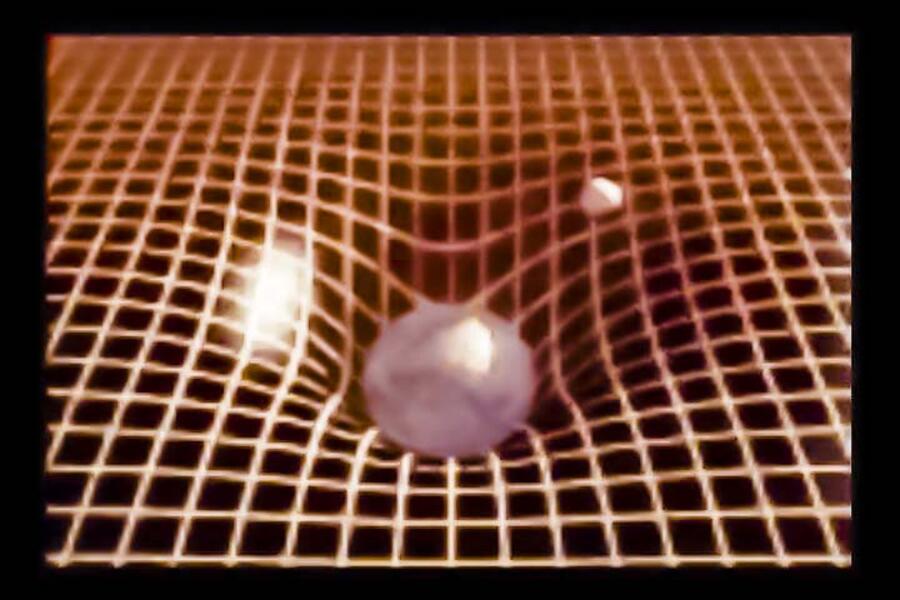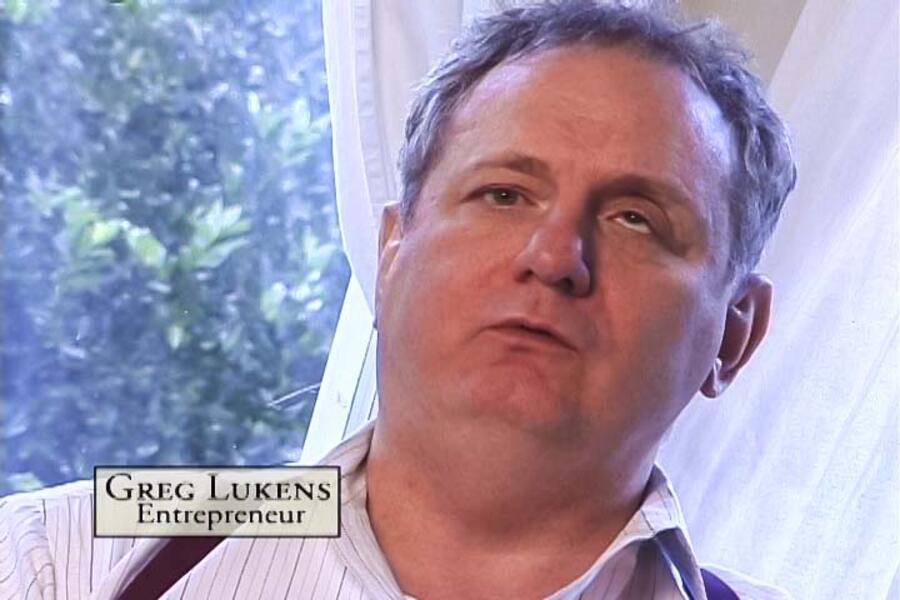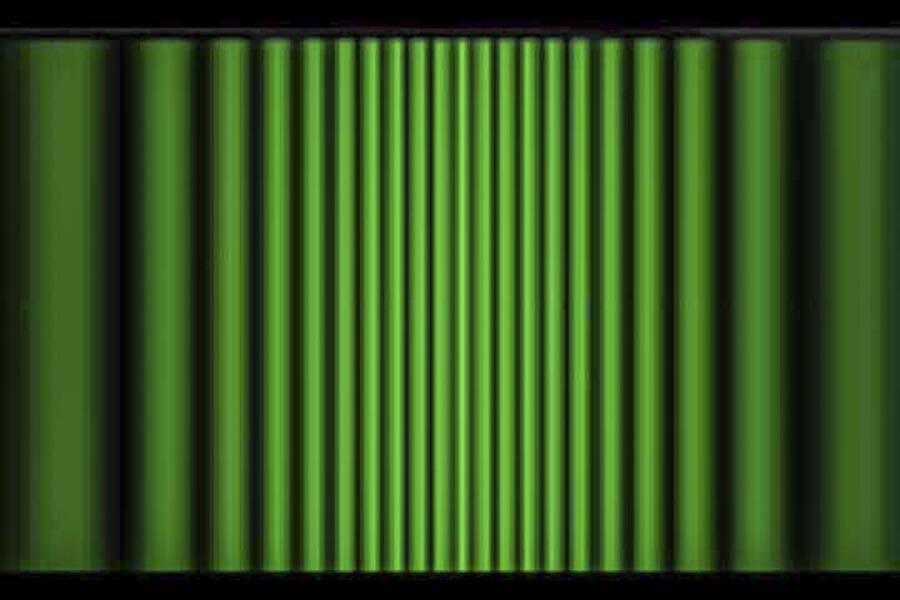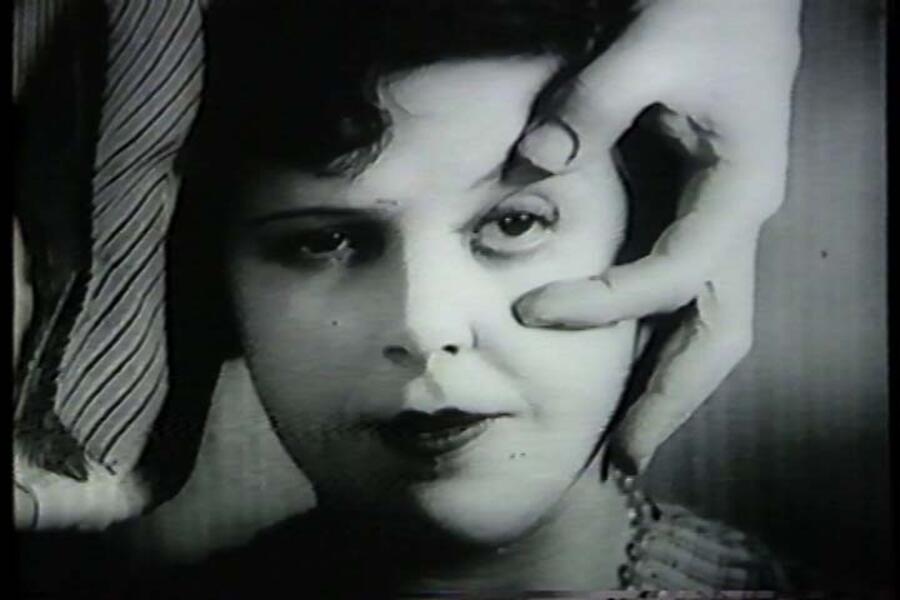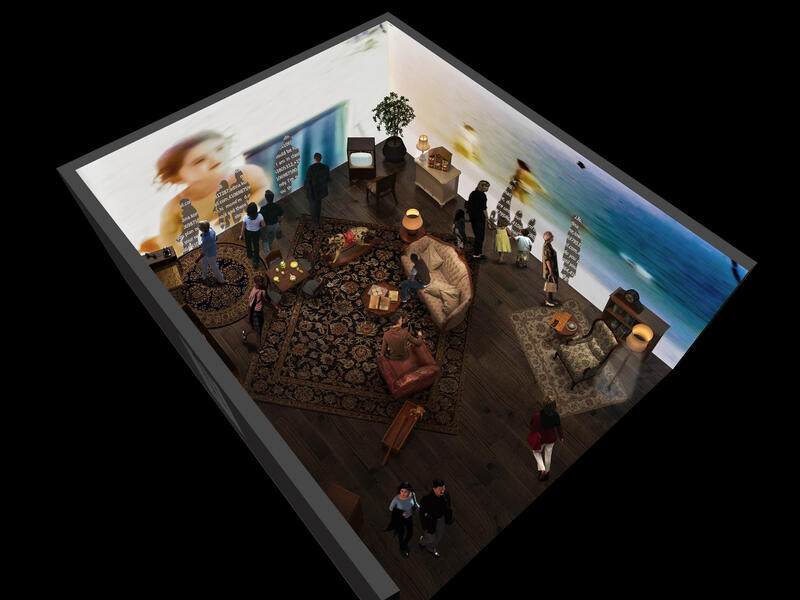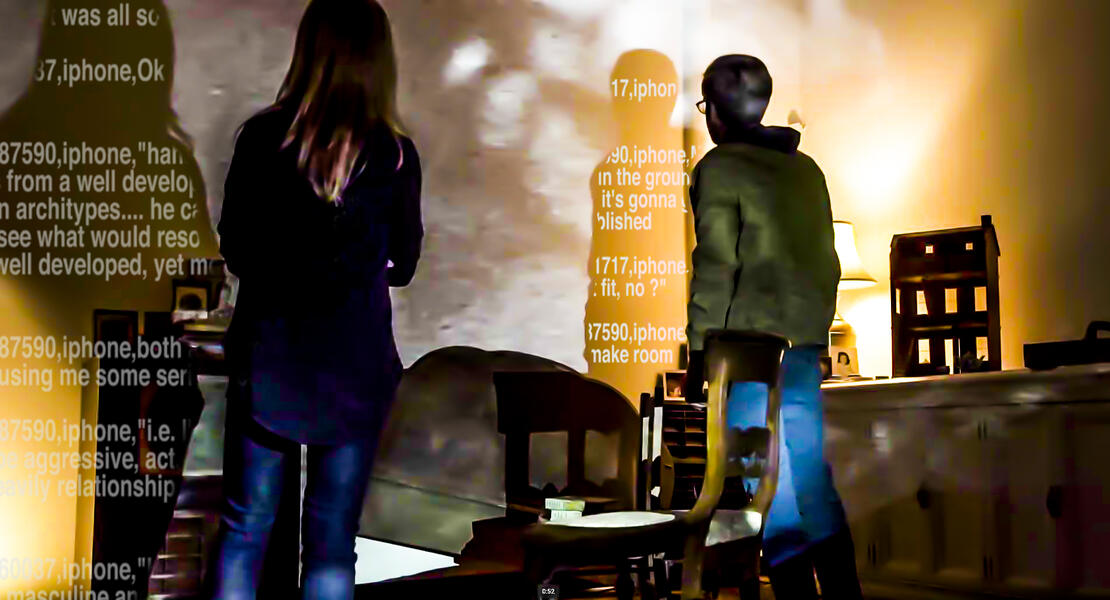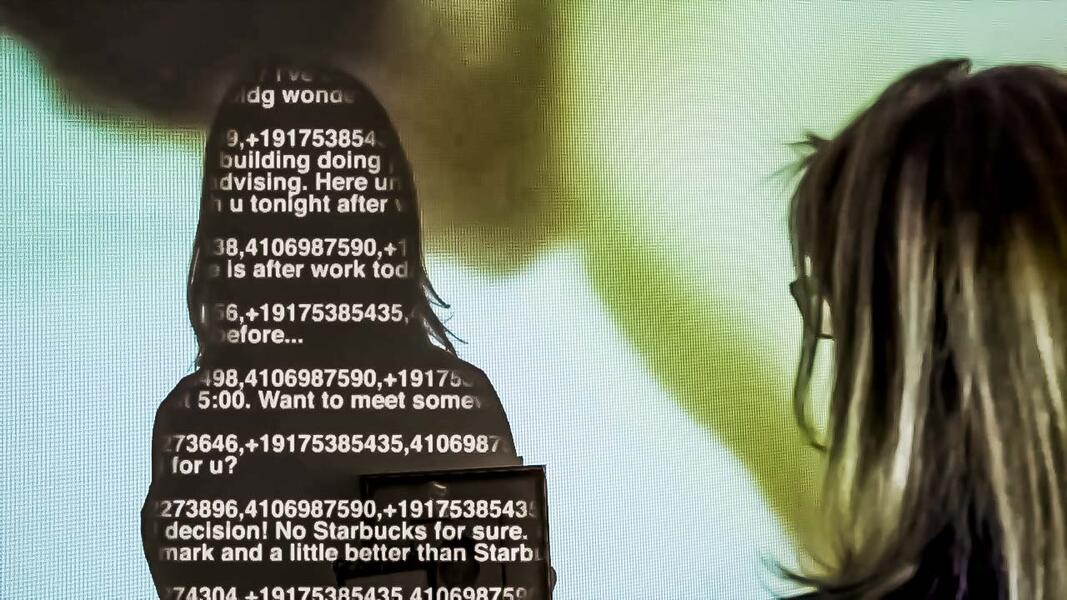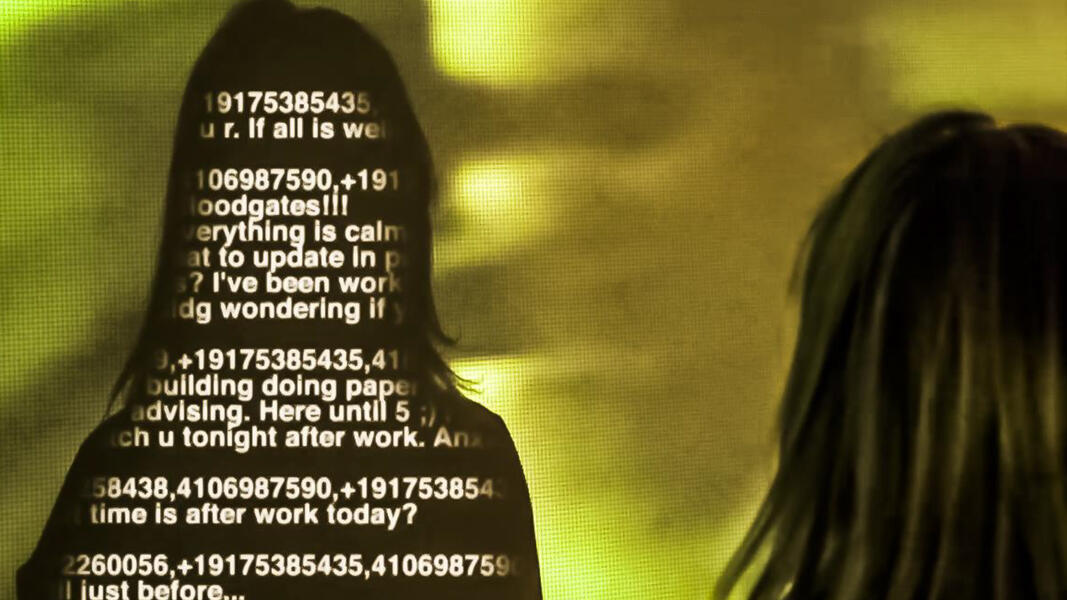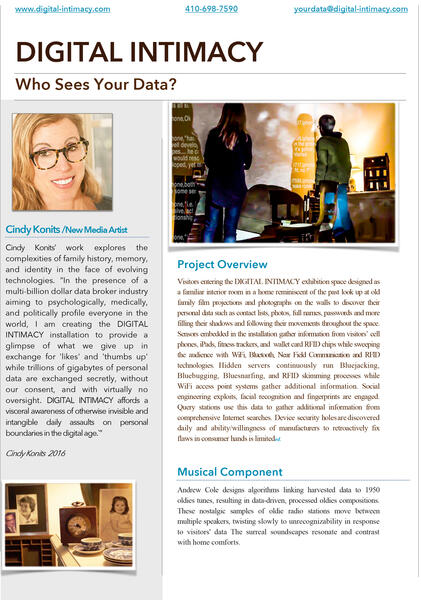Work samples
-
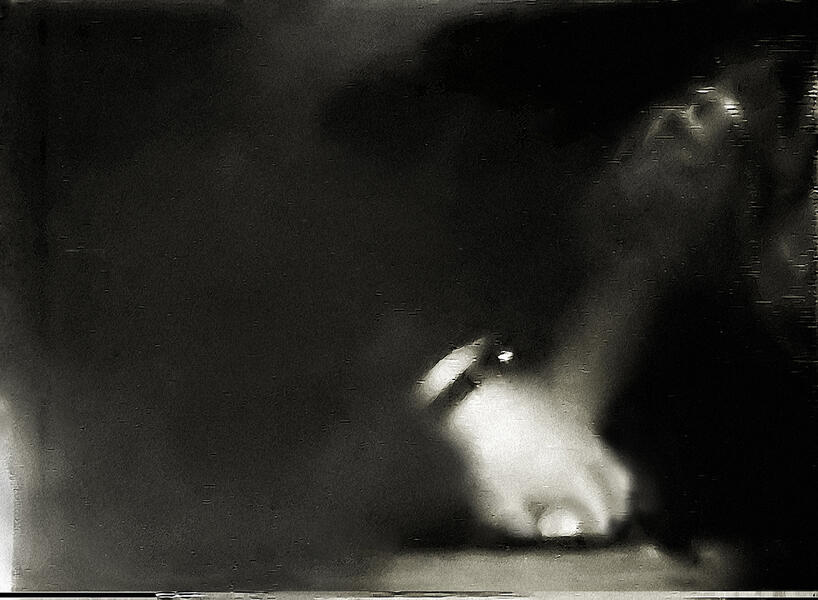 Hand GrabbedTwo hours of color and black and white 8mm family film c1940 (comprising over100,000 still frames) viewed in slow motion to select the most intriguing, enigmatic and/or aesthetically appealing clips to review frame-by-frame, resulting in a collection of images to enhance and enlarge over 1,000% from the original size .10″x.13″ to 15″x21″. This was accomplished with algorithms and digital painting, resulting in a hybrid of vintage 8mm film and digital painting. 15x21in; 38x53cm Archival Pigment Print http://cindykonits.com/memoire-involuntaire-still-frames/
Hand GrabbedTwo hours of color and black and white 8mm family film c1940 (comprising over100,000 still frames) viewed in slow motion to select the most intriguing, enigmatic and/or aesthetically appealing clips to review frame-by-frame, resulting in a collection of images to enhance and enlarge over 1,000% from the original size .10″x.13″ to 15″x21″. This was accomplished with algorithms and digital painting, resulting in a hybrid of vintage 8mm film and digital painting. 15x21in; 38x53cm Archival Pigment Print http://cindykonits.com/memoire-involuntaire-still-frames/ -
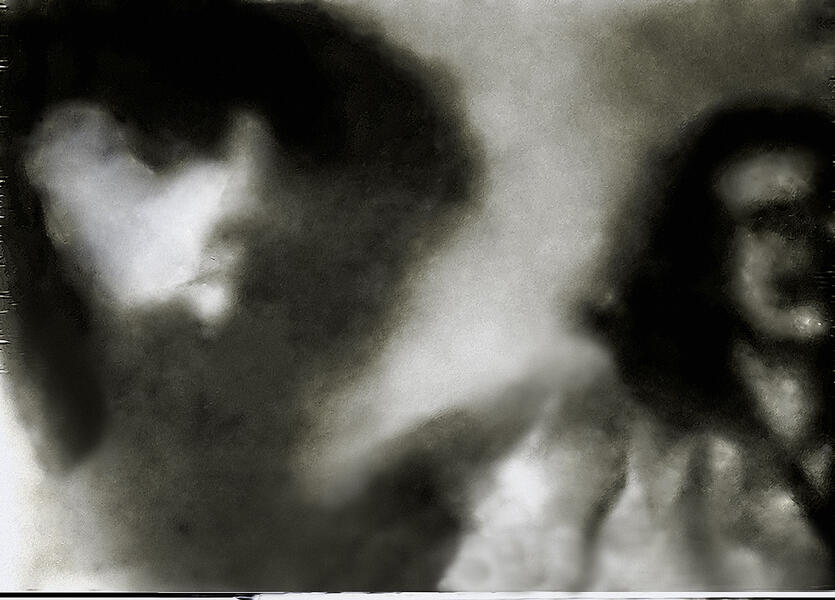 Playing for the CameraTwo hours of color and black and white 8mm family film c1940 (comprising over100,000 still frames) viewed in slow motion to select the most intriguing, enigmatic and/or aesthetically appealing clips to review frame-by-frame, resulting in a collection of images to enhance and enlarge over 1,000% from the original size .10″x.13″ to 15″x21″. This was accomplished with algorithms and digital painting, resulting in a hybrid of vintage 8mm film and digital painting. 15x21in; 38x53cm Archival Pigment Print http://cindykonits.com/memoire-involuntaire-still-frames/
Playing for the CameraTwo hours of color and black and white 8mm family film c1940 (comprising over100,000 still frames) viewed in slow motion to select the most intriguing, enigmatic and/or aesthetically appealing clips to review frame-by-frame, resulting in a collection of images to enhance and enlarge over 1,000% from the original size .10″x.13″ to 15″x21″. This was accomplished with algorithms and digital painting, resulting in a hybrid of vintage 8mm film and digital painting. 15x21in; 38x53cm Archival Pigment Print http://cindykonits.com/memoire-involuntaire-still-frames/ -
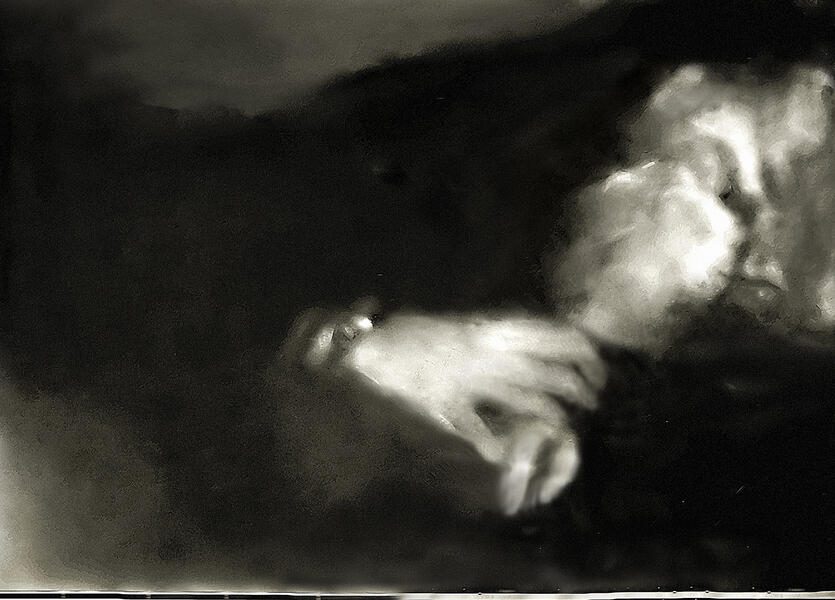 Arm OutstretchedTwo hours of color and black and white 8mm family film c1940 (comprising over100,000 still frames) viewed in slow motion to select the most intriguing, enigmatic and/or aesthetically appealing clips to review frame-by-frame, resulting in a collection of images to enhance and enlarge over 1,000% from the original size .10″x.13″ to 15″x21″. This was accomplished with algorithms and digital painting, resulting in a hybrid of vintage 8mm film and digital painting. 15x21in; 38x53cm Archival Pigment Print http://cindykonits.com/memoire-involuntaire-still-frames/
Arm OutstretchedTwo hours of color and black and white 8mm family film c1940 (comprising over100,000 still frames) viewed in slow motion to select the most intriguing, enigmatic and/or aesthetically appealing clips to review frame-by-frame, resulting in a collection of images to enhance and enlarge over 1,000% from the original size .10″x.13″ to 15″x21″. This was accomplished with algorithms and digital painting, resulting in a hybrid of vintage 8mm film and digital painting. 15x21in; 38x53cm Archival Pigment Print http://cindykonits.com/memoire-involuntaire-still-frames/ -
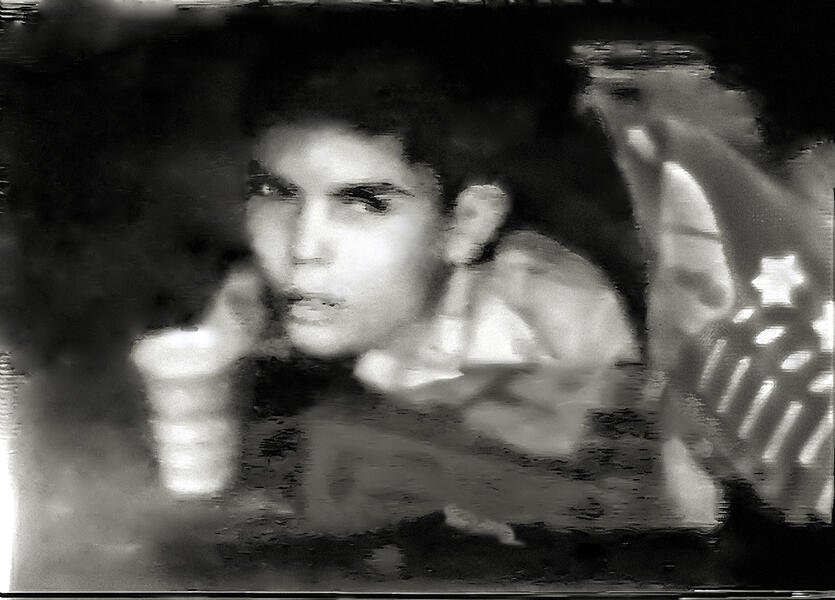 UnsettlingTwo hours of color and black and white 8mm family film c1940 (comprising over100,000 still frames) viewed in slow motion to select the most intriguing, enigmatic and/or aesthetically appealing clips to review frame-by-frame, resulting in a collection of images to enhance and enlarge over 1,000% from the original size .10″x.13″ to 15″x21″. This was accomplished with algorithms and digital painting, resulting in a hybrid of vintage 8mm film and digital painting. 15x21in; 38x53cm Archival Pigment Print http://cindykonits.com/memoire-involuntaire-still-frames/
UnsettlingTwo hours of color and black and white 8mm family film c1940 (comprising over100,000 still frames) viewed in slow motion to select the most intriguing, enigmatic and/or aesthetically appealing clips to review frame-by-frame, resulting in a collection of images to enhance and enlarge over 1,000% from the original size .10″x.13″ to 15″x21″. This was accomplished with algorithms and digital painting, resulting in a hybrid of vintage 8mm film and digital painting. 15x21in; 38x53cm Archival Pigment Print http://cindykonits.com/memoire-involuntaire-still-frames/
About Cindy

Cindy Konits' work explores the complexities of family history, memory, and identity in the face of evolving technologies. She was Assistant Professor of Art at Stevenson University, Maryland teaching darkroom photography, digital photography and Video Art for 15 years. The discovery of 8mm family film c.1940 and secrets revealed in individual stillframes has inspired significant projects in recent years. BITS OF US is a research effort for realtime online collaborative video editing… more
MEMOIRE INVOLUNTAIRE: The Essence of the Past
I was interested in highlighting these enigmatic appearances in life-size versions of the still frames. Since there is no existing software to create even a 1000% increase in scale [dimensions of 8mm film frame: .10”x.13” to 20”x30”], I contacted Dr. Yiannis Aloimonos of the Computer Vision Laboratory, the Center for Automation Research at the Institute for Advanced Computer Studies and the Department of Computer Science at the University of Maryland who considered incorporating the still frames into his research developing an algorithm to create a similar visual impression to an original photograph at a much greater scale. It became clear however that the attempt was futile with material in such degraded condition as the old 8mm film. I then began working to enhance the general structure and content of the image with digital painting, resulting in 15x21in. reproductions. I created each image in the MEMOIRE INVOLUNTAIRE series by arranging antique furnishings in my studio including one or more chairs facing a RCA Victor TV made in 1950. With a 20 ft. projection of an enhanced still frame on the wall and my camera on a tripod and timer, I entered the frame of the photograph to sit in front of this television that is similar to the one I once viewed sitting alongside living counterparts of the ghosts I recognized in the original family film.
The aged family film I worked with had elicited ‘memoire involontaire,’ a term Marcel Proust used to describe the operation of memory itself, as everyday sights and senses of the present moment stimulate a recognition of the past. In a similar vein, I have been particularly inspired to create this series because in the digital transition of photography and cinema away from film, the relationship of the digital photograph to physical reality has fully slipped. In the words of D.N. Rodowick, digital capture is now a calculation in which time is only light converted into numerical code, breaking the physical link to space.** Once the culture of film is fully extinguished however, it will not be constructed again since photographic film fabrication represents a consumer product of the highest technology. In creating the MEMOIRE INVOLUNTAIRE series I have valued the opportunity to incorporate authentic film artifacts in the exploration of a memory, and at the same time raise the consideration of what we lose when film itself becomes an artifact.
With these film stills, I was selected to participate in a Master Photobook Workshop at the International Center of Photography NYC. The award-winning Heijdens Karwei Photography Book Design Agency from Amsterdam, Netherlands designed my artist book MEMOIRE INVOLUNTAIRE The Essence of the Past, which will be available in a Limited Edition Set of twenty (20) in 2019. http://cindykonits.com/memoire-involuntaire-artist-book/.
*Freud, S. (1919). The ‘Uncanny’. The Standard Edition of the Complete Psychological Works of Sigmund Freud,
Volume XVII (1917-1919): An Infantile Neurosis and Other Works, 217-256.
**The Future is Now: The Virtual Life of Film by D.N. Rodowick.
-
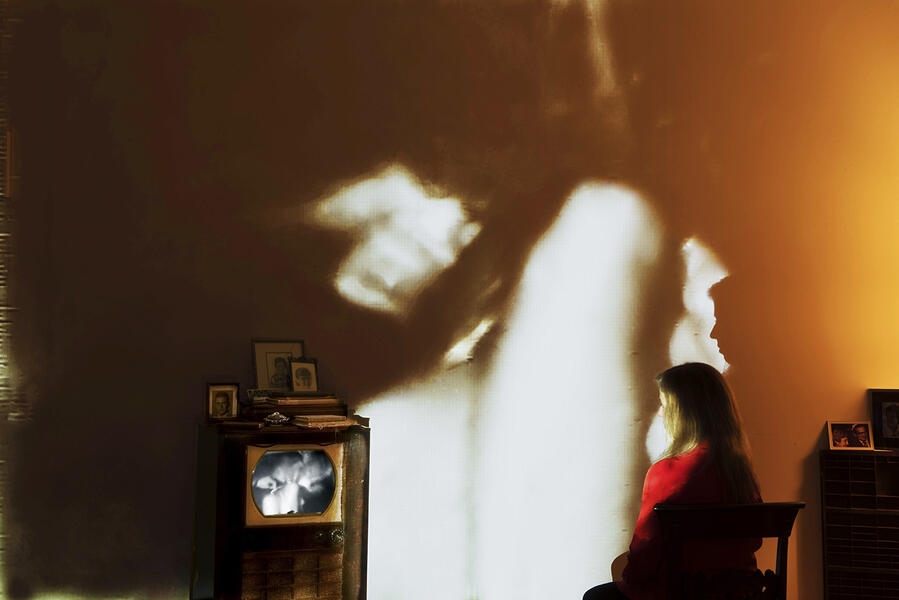 MEMOIRE INVOLUNTAIRE #1MEMOIRE INVOLUNTAIRE #1, Installation of antique furnishings, 20 ft. projection of an enhanced still frame on the wall, photograph of this with artist sitting in front of RCA Victor TV (1950) as sitting alongside living counterparts of the ghosts recognized in the original family film. One of series of eight (8) 13×19 in; 33X48 cm Archival Pigment Prints in a Limited Edition Set of ten (10).
MEMOIRE INVOLUNTAIRE #1MEMOIRE INVOLUNTAIRE #1, Installation of antique furnishings, 20 ft. projection of an enhanced still frame on the wall, photograph of this with artist sitting in front of RCA Victor TV (1950) as sitting alongside living counterparts of the ghosts recognized in the original family film. One of series of eight (8) 13×19 in; 33X48 cm Archival Pigment Prints in a Limited Edition Set of ten (10). -
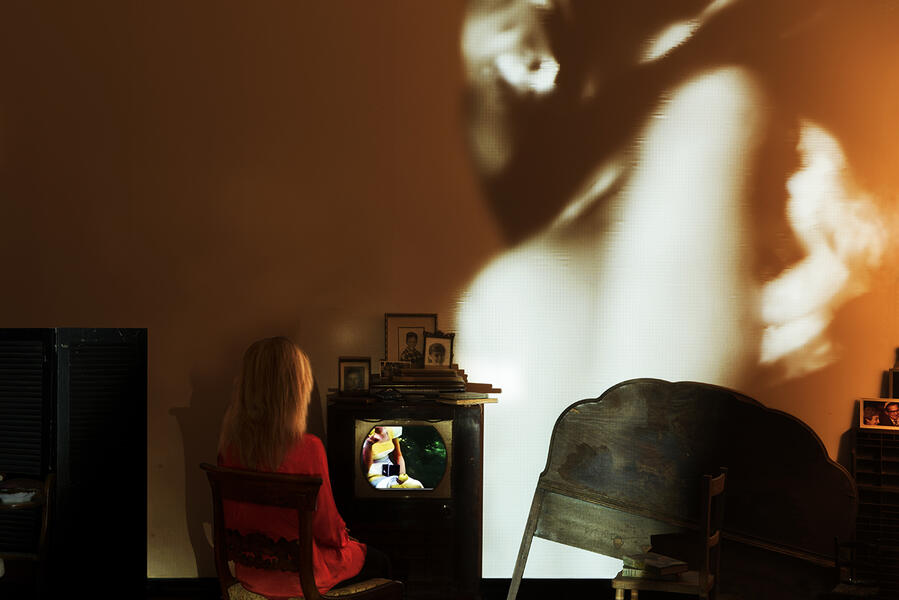 MEMOIRE INVOLUNTAIRE #2Installation of antique furnishings, 20 ft. projection of an enhanced still frame on the wall, photograph of this with artist sitting in front of RCA Victor TV (1950) as sitting alongside living counterparts of the ghosts recognized in the original family film. One of series of eight (8) 13×19 in; 33X48 cm Archival Pigment Prints in a Limited Edition Set of ten (10).
MEMOIRE INVOLUNTAIRE #2Installation of antique furnishings, 20 ft. projection of an enhanced still frame on the wall, photograph of this with artist sitting in front of RCA Victor TV (1950) as sitting alongside living counterparts of the ghosts recognized in the original family film. One of series of eight (8) 13×19 in; 33X48 cm Archival Pigment Prints in a Limited Edition Set of ten (10). -
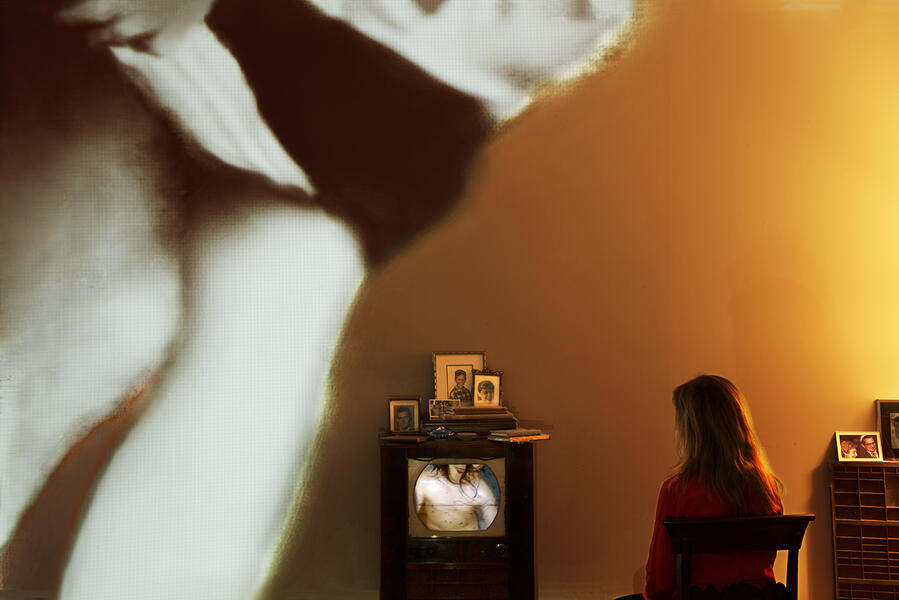 MEMOIRE INVOLUNTAIRE #3MEMOIRE INVOLUNTAIRE #3 Installation of antique furnishings, 20 ft. projection of an enhanced still frame on the wall, photograph of this with artist sitting in front of RCA Victor TV (1950) as sitting alongside living counterparts of the ghosts recognized in the original family film. One of series of eight (8) 13×19 in; 33X48 cm Archival Pigment Prints in a Limited Edition Set of ten (10).
MEMOIRE INVOLUNTAIRE #3MEMOIRE INVOLUNTAIRE #3 Installation of antique furnishings, 20 ft. projection of an enhanced still frame on the wall, photograph of this with artist sitting in front of RCA Victor TV (1950) as sitting alongside living counterparts of the ghosts recognized in the original family film. One of series of eight (8) 13×19 in; 33X48 cm Archival Pigment Prints in a Limited Edition Set of ten (10). -
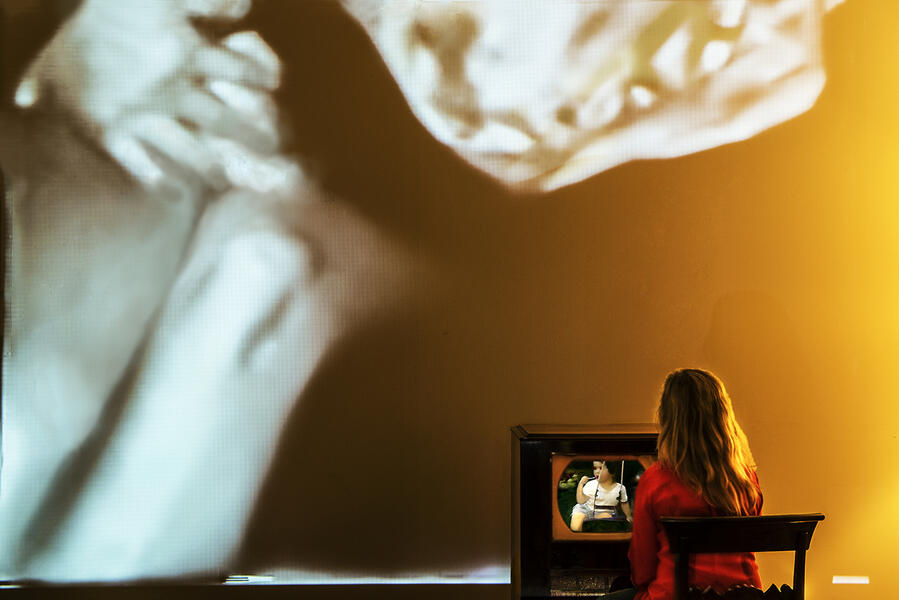 MEMOIRE INVOLUNTAIRE #4Installation of antique furnishings, 20 ft. projection of an enhanced still frame on the wall, photograph of this with artist sitting in front of RCA Victor TV (1950) as sitting alongside living counterparts of the ghosts recognized in the original family film. One of series of eight (8) 13×19 in; 33X48 cm Archival Pigment Prints in a Limited Edition Set of ten (10).
MEMOIRE INVOLUNTAIRE #4Installation of antique furnishings, 20 ft. projection of an enhanced still frame on the wall, photograph of this with artist sitting in front of RCA Victor TV (1950) as sitting alongside living counterparts of the ghosts recognized in the original family film. One of series of eight (8) 13×19 in; 33X48 cm Archival Pigment Prints in a Limited Edition Set of ten (10). -
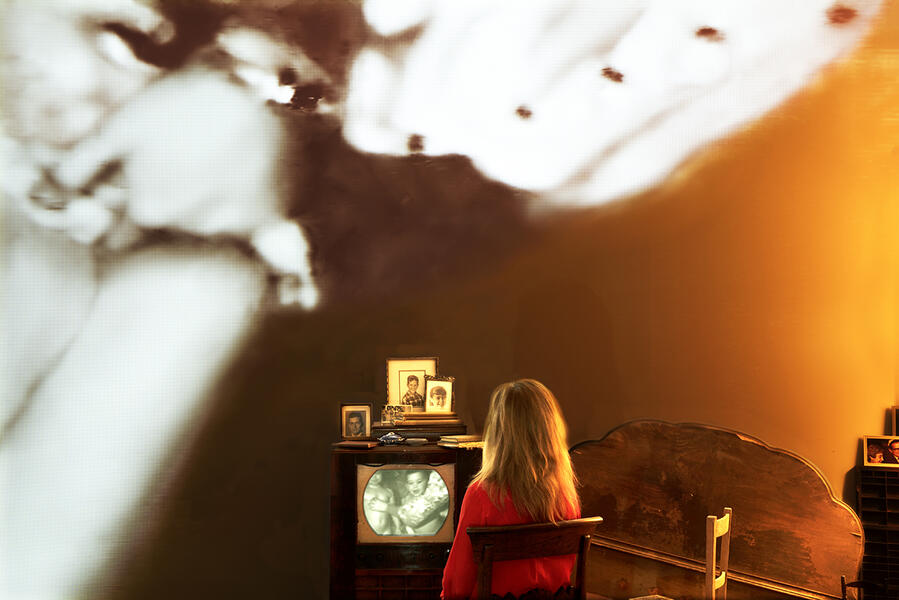 MEMOIRE INVOLUNTAIRE #5Installation of antique furnishings, 20 ft. projection of an enhanced still frame on the wall, photograph of this with artist sitting in front of RCA Victor TV (1950) as sitting alongside living counterparts of the ghosts recognized in the original family film. One of series of eight (8) 13×19 in; 33X48 cm Archival Pigment Prints in a Limited Edition Set of ten (10).
MEMOIRE INVOLUNTAIRE #5Installation of antique furnishings, 20 ft. projection of an enhanced still frame on the wall, photograph of this with artist sitting in front of RCA Victor TV (1950) as sitting alongside living counterparts of the ghosts recognized in the original family film. One of series of eight (8) 13×19 in; 33X48 cm Archival Pigment Prints in a Limited Edition Set of ten (10). -
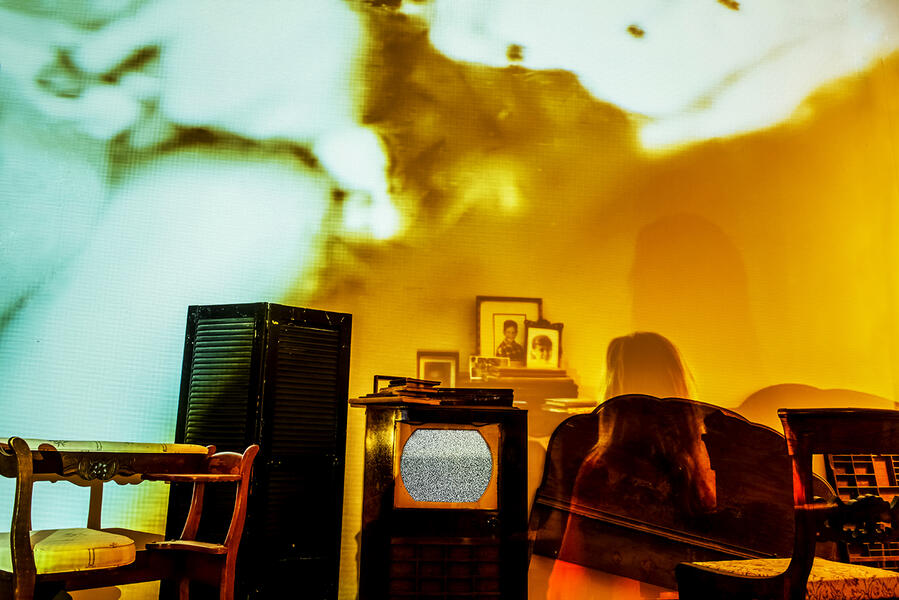 MEMOIRE INVOLUNTAIRE #6Installation of antique furnishings, 20 ft. projection of an enhanced still frame on the wall, photograph of this with artist sitting in front of RCA Victor TV (1950) as sitting alongside living counterparts of the ghosts recognized in the original family film. One of series of eight (8) 13×19 in; 33X48 cm Archival Pigment Prints in a Limited Edition Set of ten (10).
MEMOIRE INVOLUNTAIRE #6Installation of antique furnishings, 20 ft. projection of an enhanced still frame on the wall, photograph of this with artist sitting in front of RCA Victor TV (1950) as sitting alongside living counterparts of the ghosts recognized in the original family film. One of series of eight (8) 13×19 in; 33X48 cm Archival Pigment Prints in a Limited Edition Set of ten (10). -
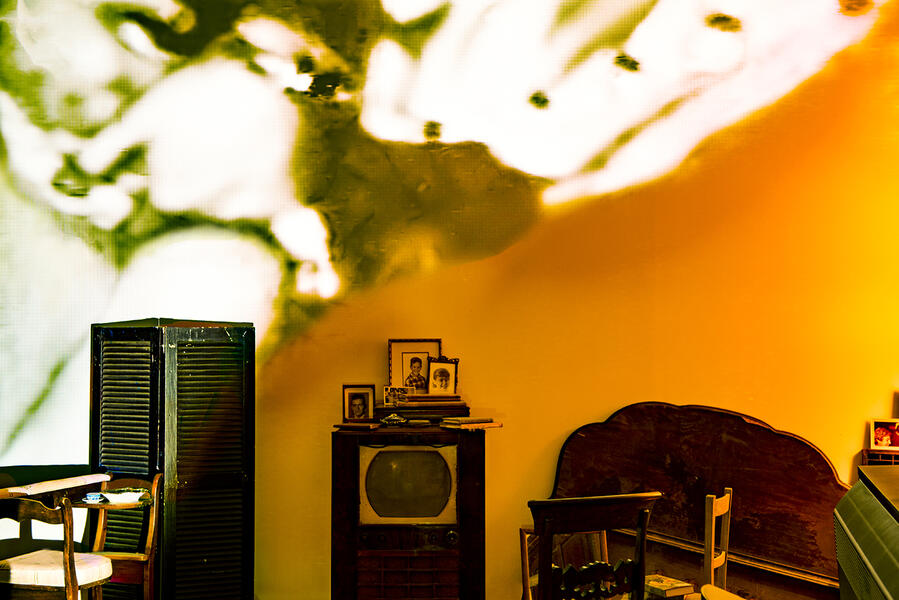 MEMOIRE INVOLUNTAIRE #7Installation of antique furnishings, 20 ft. projection of an enhanced still frame on the wall, photograph of this with artist sitting in front of RCA Victor TV (1950) as sitting alongside living counterparts of the ghosts recognized in the original family film. One of series of eight (8) 13×19 in; 33X48 cm Archival Pigment Prints in a Limited Edition Set of ten (10).
MEMOIRE INVOLUNTAIRE #7Installation of antique furnishings, 20 ft. projection of an enhanced still frame on the wall, photograph of this with artist sitting in front of RCA Victor TV (1950) as sitting alongside living counterparts of the ghosts recognized in the original family film. One of series of eight (8) 13×19 in; 33X48 cm Archival Pigment Prints in a Limited Edition Set of ten (10).
MEMOIRE INVOLUNTAIRE Film Stills
http://cindykonits.com/memoire-involuntaire-still-frames/
-
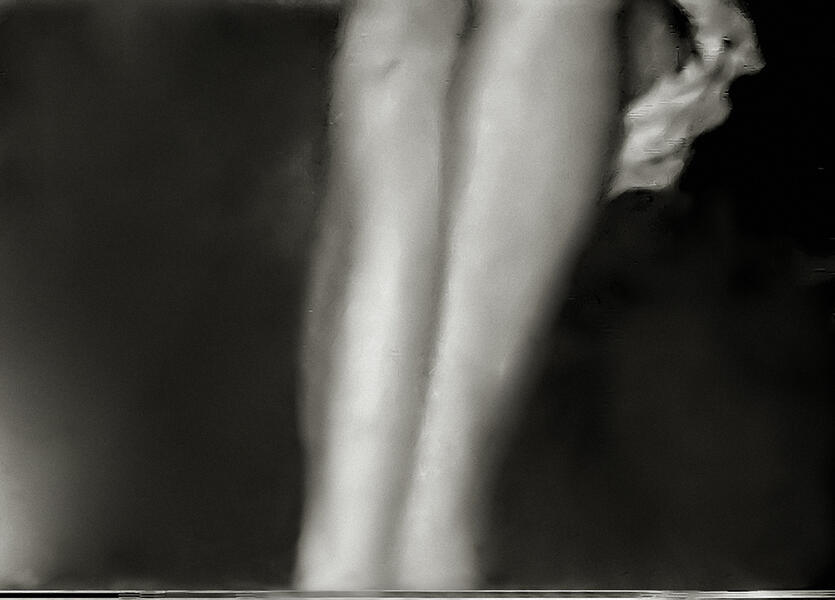 Pressed LegsFilm still from 8mm family film c1940 enlarged and enhanced with algorithms and digital painting from original .10″x.13″ to 15″x21″. Archival Pigment Print
Pressed LegsFilm still from 8mm family film c1940 enlarged and enhanced with algorithms and digital painting from original .10″x.13″ to 15″x21″. Archival Pigment Print -
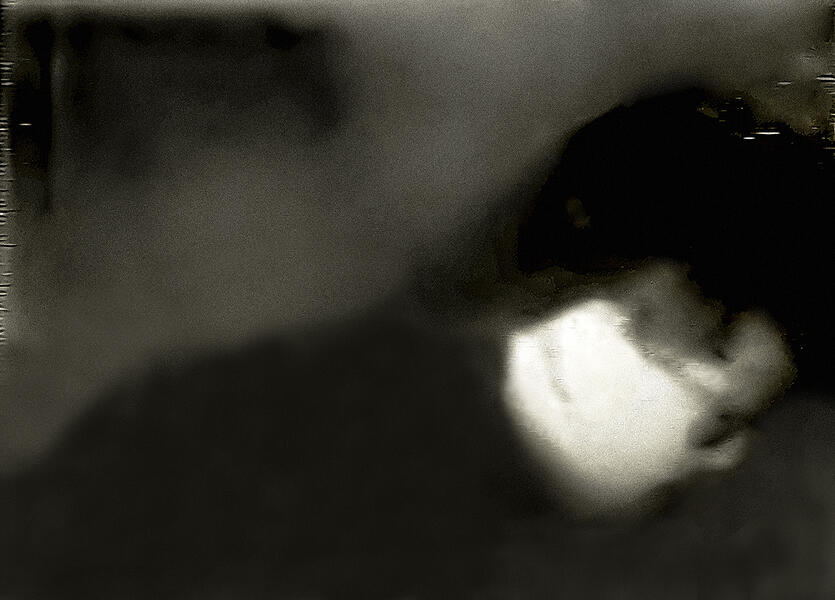 Man in the DarkFilm still from 8mm family film c1940 enlarged and enhanced with algorithms and digital painting from original .10″x.13″ to 15″x21″. Archival Pigment Print
Man in the DarkFilm still from 8mm family film c1940 enlarged and enhanced with algorithms and digital painting from original .10″x.13″ to 15″x21″. Archival Pigment Print -
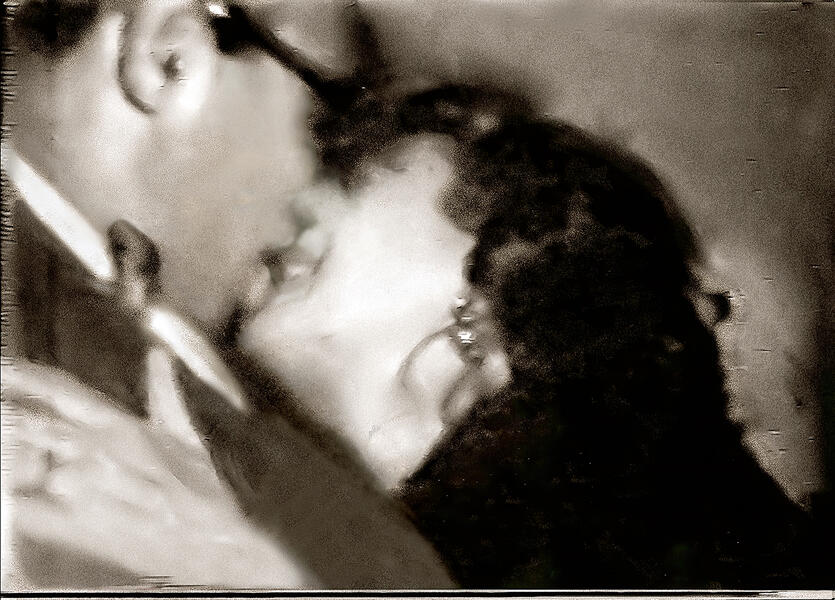 French KissFilm still from 8mm family film c1940 enlarged and enhanced with algorithms and digital painting from original .10″x.13″ to 15″x21″. Archival Pigment Print
French KissFilm still from 8mm family film c1940 enlarged and enhanced with algorithms and digital painting from original .10″x.13″ to 15″x21″. Archival Pigment Print -
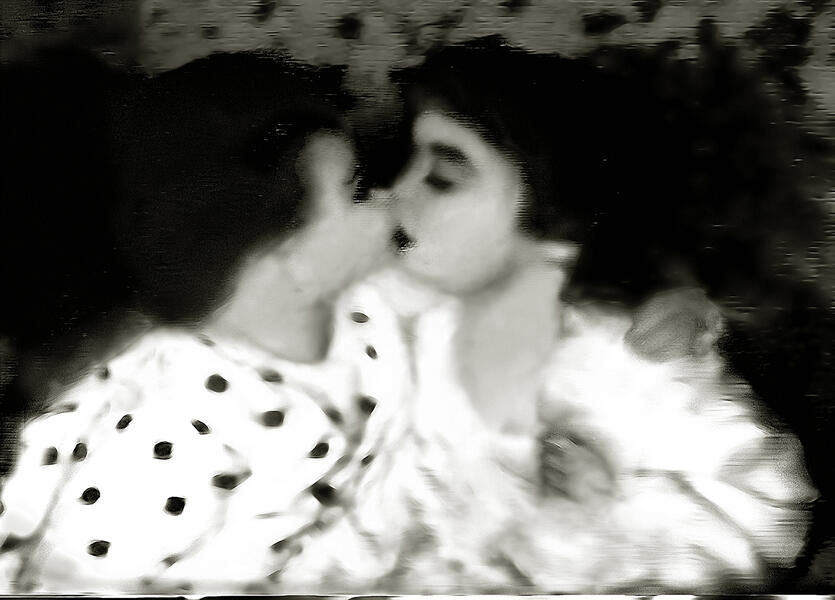 Kids KissFilm still from 8mm family film c1940 enlarged and enhanced with algorithms and digital painting from original .10″x.13″ to 15″x21″. Archival Pigment Print
Kids KissFilm still from 8mm family film c1940 enlarged and enhanced with algorithms and digital painting from original .10″x.13″ to 15″x21″. Archival Pigment Print -
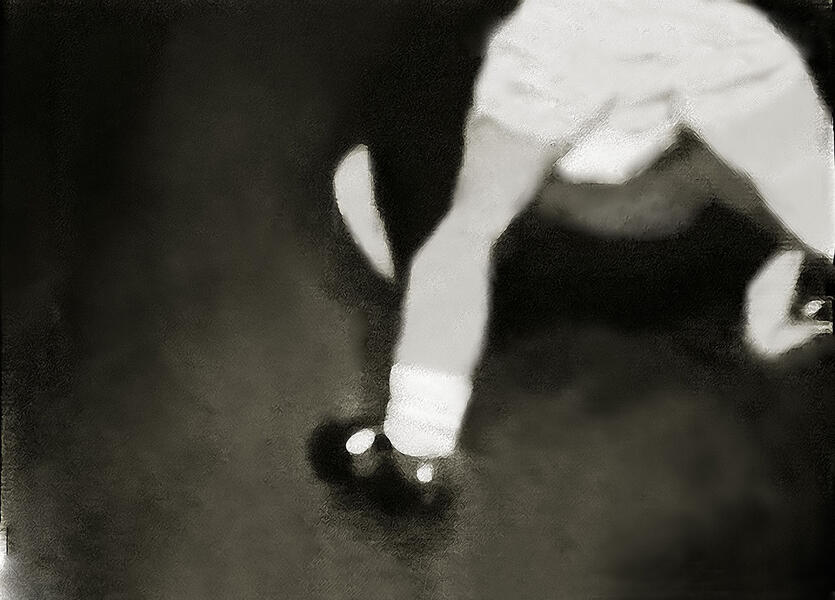 Party ShoesFilm still from 8mm family film c1940 enlarged and enhanced with algorithms and digital painting from original .10″x.13″ to 15″x21″. Archival Pigment Print
Party ShoesFilm still from 8mm family film c1940 enlarged and enhanced with algorithms and digital painting from original .10″x.13″ to 15″x21″. Archival Pigment Print -
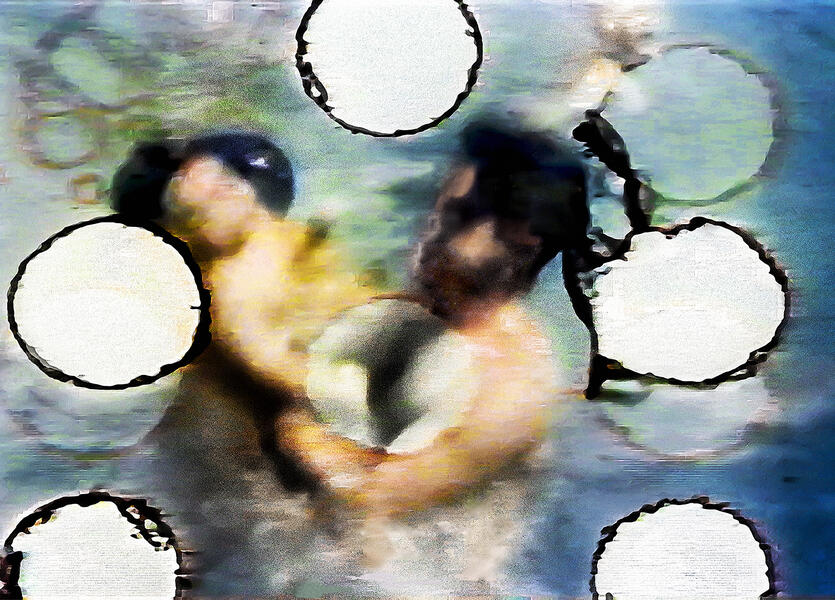 Playing in WavesPlaying in Waves, Film still from 8mm family film c1940 enlarged and enhanced with algorithms and digital painting from original .10″x.13″ to 15″x21″. Archival Pigment Print
Playing in WavesPlaying in Waves, Film still from 8mm family film c1940 enlarged and enhanced with algorithms and digital painting from original .10″x.13″ to 15″x21″. Archival Pigment Print -
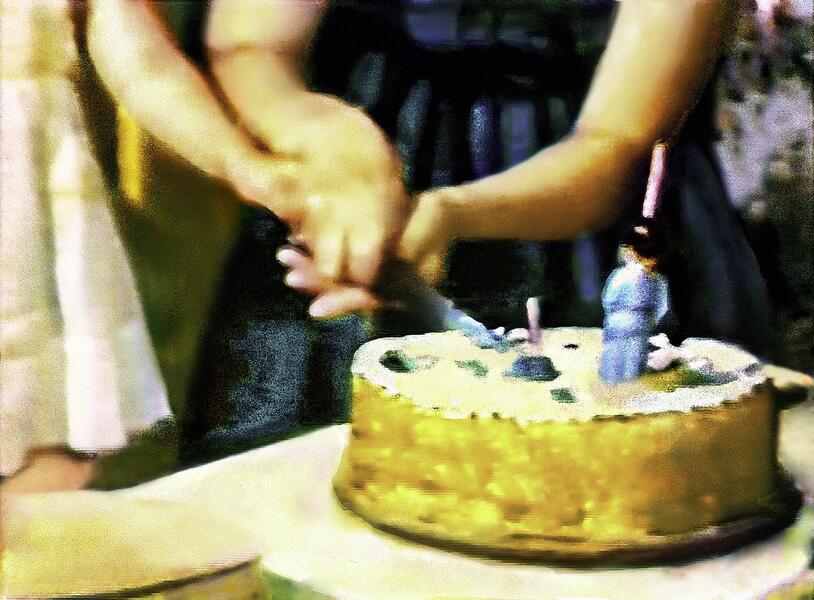 Birthday Cake at SunsetFilm still from 8mm family film c1940 enlarged and enhanced with algorithms and digital painting from original .10″x.13″ to 15″x21″. Archival Pigment Print
Birthday Cake at SunsetFilm still from 8mm family film c1940 enlarged and enhanced with algorithms and digital painting from original .10″x.13″ to 15″x21″. Archival Pigment Print -
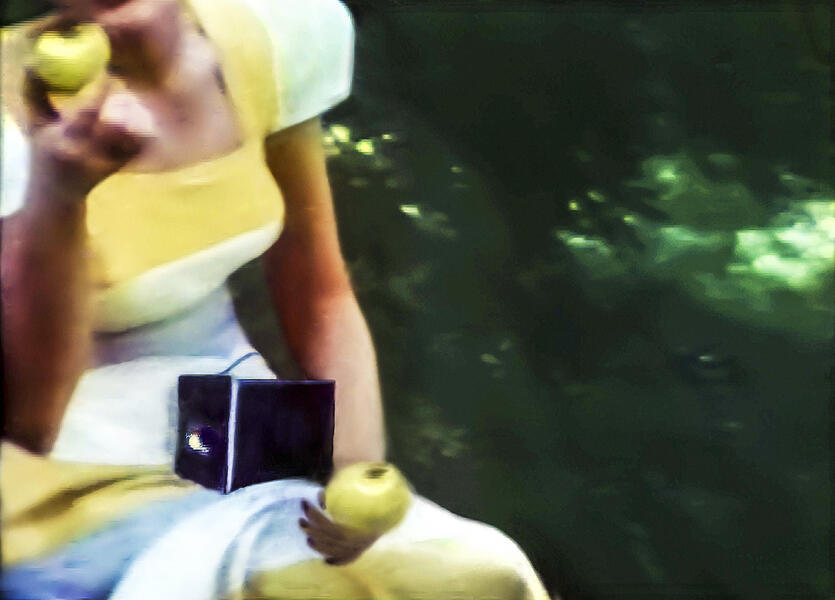 Camera, Apples and SundressFilm still from 8mm family film c1940 enlarged and enhanced with algorithms and digital painting from original .10″x.13″ to 15″x21″. Archival Pigment Print
Camera, Apples and SundressFilm still from 8mm family film c1940 enlarged and enhanced with algorithms and digital painting from original .10″x.13″ to 15″x21″. Archival Pigment Print -
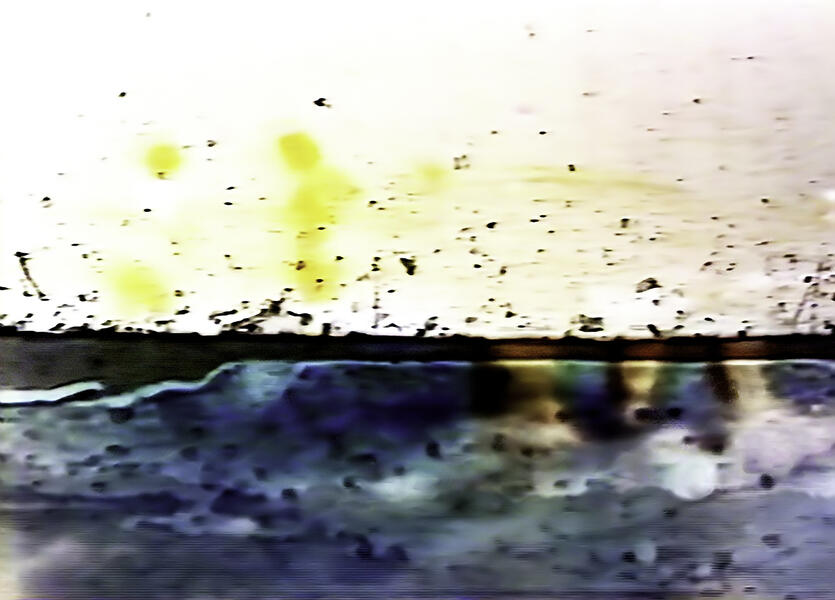 Between FramesFilm still from 8mm family film c1940 enlarged and enhanced with algorithms and digital painting from original .10″x.13″ to 15″x21″. Archival Pigment Print
Between FramesFilm still from 8mm family film c1940 enlarged and enhanced with algorithms and digital painting from original .10″x.13″ to 15″x21″. Archival Pigment Print -
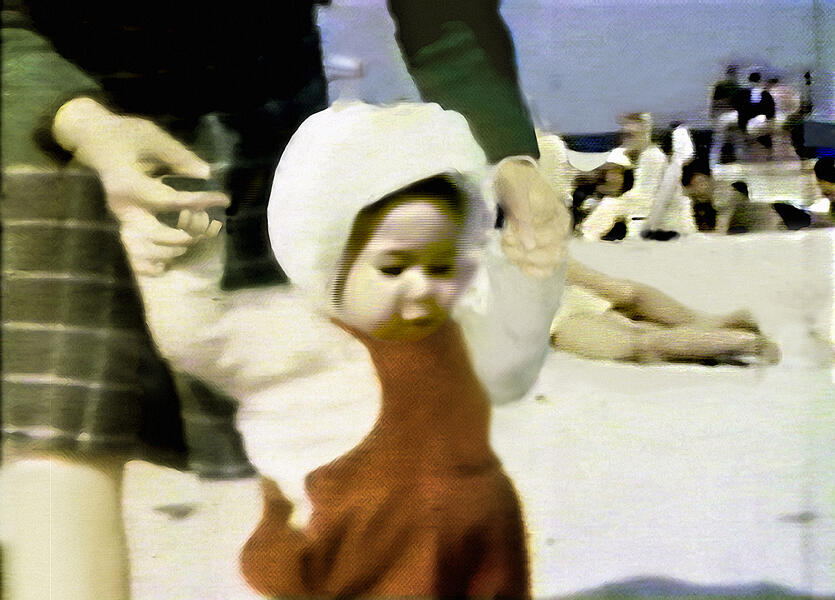 Autumn BeachFilm still from 8mm family film c1940 enlarged and enhanced with algorithms and digital painting from original .10″x.13″ to 15″x21″. Archival Pigment Print
Autumn BeachFilm still from 8mm family film c1940 enlarged and enhanced with algorithms and digital painting from original .10″x.13″ to 15″x21″. Archival Pigment Print
THE WAY I SEE IT
Synopsis
My mother’s first cousin, Dr. Henry Abrams, was Albert Einstein’s ophthalmologist and friend. The morning after Einstein’s death on April 18, 1955, Dr. Abrams removed the eyes from Einstein’s corpse. “The Way I See It” is an exploration of the legacy of this decision by the adult who was haunted and disturbed when learning of it as a young child. Until his death in November 2011, Henry Abrams retained the eyes in a jar in his dresser drawer.
Screenings Mattin Arts Center, Johns Hopkins University, Baltimore Maryland.
TV India F.I.C.T.S. Film Festival, Mumbai India.
Bare Bones International Film Festival, Muskogee Oklahoma,
NOMINATED Best Documentary Short.
Tribeca Underground Film Festival, New York City, New York.
Anthology Film Archives, New York City New York.
Long Island International Film Expo, Bellmore New York.
Expresion en Corto, San Miquel de Allende, Mexico.
HollyShorts Short Film Festival, Hollywood California.
FilmFest Reloaded, New York City, New York.
Eberswalde Film Festival, Eberswalde Germany.
West Chester Film Festival, West Chester Pennsylania.
Small Town Film Festival, Ontario Canada.
Queens International Film Festival, New York City, New York.
Short Film Festival of India, Chennai India.
International Film Festival, Washington, D.C.
NewFilmmakers, New York City, New York.
Swansea Bay Film Festival, Swansea, United Kingdom.
DIGITAL INTIMACY
The DIGITAL INTIMACY installation provides a glimpse of what we give up in exchange for 'likes' and 'thumbs up' while trillions of gigabytes of personal data are exchanged secretly, without our consent, and with virtually no oversight. DIGITAL INTIMACY affords a visceral awareness of otherwise invisible and intangible daily assaults on personal boundaries in the digital age.
Visitors entering the DIGITAL INTIMACY exhibition space designed a familiar interior room in a home reminiscent of the past look up at old family film projections and photographs on the walls to discover their personal data such as contact lists, photos, full names, passwords and more filling their shadows and following their movements throughout the space. Sensors embedded in the installation gather information from visitors’ cell phones, iPads, fitness trackers, and wallet card RFID chips while sweeping the audience with WiFi, Bluetooth, Near Field Communication and RFID technologies. Hidden servers continuously run Bluejacking, Bluebugging, Bluesnarfing, and RFID skimming processes while WiFi access point systems gather additional information. Social engineering exploits, facial recognition and fingerprints are engaged. Query stations use this data to gather additional information from comprehensive Internet searches. Device security holes are discovered daily and ability/willingness of manufacturers to retroactively fix flaws in consumer hands is limiteded. Andrew Cole, musician and composer, designs algorithms for the DIGITAL INTIMACY installation space linking harvested data to 1950 oldies tunes, resulting in data-driven, processed oldies compositions. These nostalgic samples of oldie radio stations move between multiple speakers, twisting slowly to unrecognizability in response to visitors' data The surreal soundscapes resonate and contrast with home comforts.
www.digital-intimacy.com
Engaged in Fundraising Campaign
“DIGITAL INTIMACY is an excellent medium to make these security risks more tangible. I believe that by employing the established techniques and common, ubiquitous technology pervading the online experience, e.g. location tracking, as well as physical spaces, such as shopping malls, the installation has great potential for awareness, especially when juxtaposed with training workshops or a hands on security fair. I will be quite interested in running such an installation at COMCAST to make our staff aware of their responsibility to protect the company and its infrastructure.”
Vaibhav Garg
Technology Director of Cybersecurity Industry & Policy Affairs at Comcast,
Visiting Researcher Collaborator at Center for Information Technology Policy at Princeton University
Editor in Chief of ACM Computers & Society
“In the Usable Security and Privacy research space, researchers have studied multiple mechanisms to increase users’ security and privacy awareness (e.g., through warnings, nudges, cues and etc.). It seems that none is super effective… Some researchers are now advocating more “creepy” ways to trigger users’ sec/priv awareness levels. I can imagine how the audience’s creepy emotion could be trigged by such art installation, which may potentially better increase the public’s general security/privacy awareness.”
Dr. Jeremy Epstein, Program Director, DARPA (Defense Advanced Research Projects Agency)
“DIGITAL INTIMACY is interesting and timely given that it is an artistic expression and demonstration of important but rarely (or viscerally) understood issues of sharing, security and privacy in the digital age. Raising awareness of these things in a proactive, artistic way benefits society generally.”
Dr. Richard Forno
Director, UMBC Graduate Cybersecurity Program
Jr. Affiliate Scholar, Stanford Law School Center for Internet and Society
BITS OF US
The recognition of family in photography elicits an affiliative look, the ‘familial gaze,’ through which the image is adopted into the viewer’s own family narrative. Family photography can thus be either idealized or revelatory, or both, as it links private memory to collective history. Real time online collaborative video editing for the online project “Bits of Us” allows participants to explore an interior experience of self in memory by editing their family film, photography, and hand-drawn images within a video clip of the family film of the artist as the seed for an ever-evolving collective family film with no beginning, middle or end. Participants also upload recordings of their voice and object sounds that are then scored to the film periodically by a collaborating composer. The Bits of Us collective video provides a journey of self-discovery and freedom to experiment. The project experience can be liked to an endless scrabble game of visual associations. This is a unique opportunity for play by individuals in a broad range of demographics and age groups.
“My interest in video art dates back to the early 1970s, when together with Phyllis Gershuny I co-founded Radical Software – an early video journal. The journal’s debut issue was centered on creative editing of the answers to the questionnaire that was sent out to a wide audience of fellow artists and lovers of art. Radical Software was probably the first attempt by the artists to encourage a grassroots involvement in creating an information environment separate and free from usual constraints of the corporate media. Inherently, Radical Software was the first attempt to create video art through what has become known later as crowdsourcing. I see BITS OF US as a logical continuation and further conceptual development of our early creative efforts in video art. What makes this artistic venture even more exciting and meriting financial support from public funds is that the project will fully utilize new expressive means and tools offered by the latest digital technologies for the purposes of creating digital art through public participation. “
Beryl Korot
Artist and an early pioneer of video art
http://bitsofus.org
Project in Research and Development phase.
-
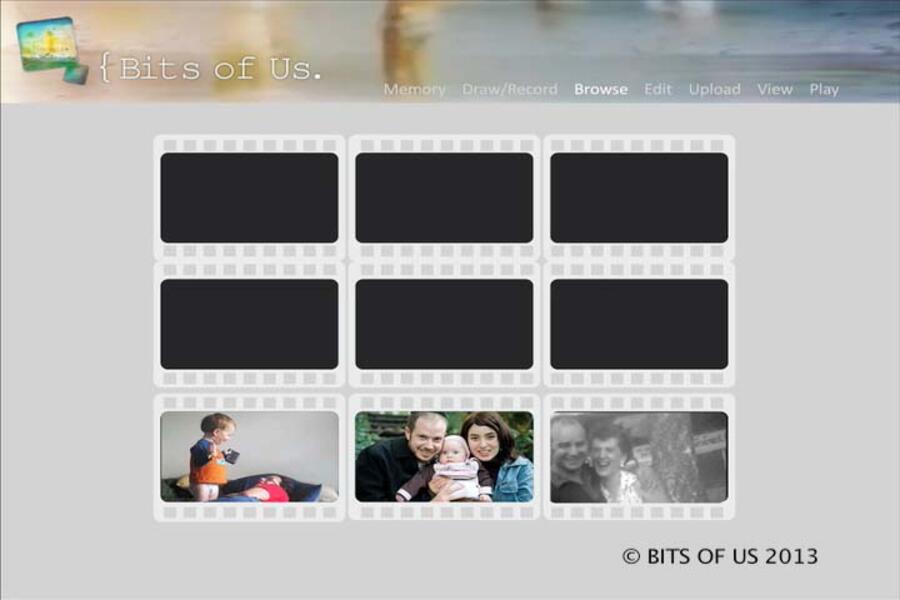 BITS OF US mockup
BITS OF US mockup -
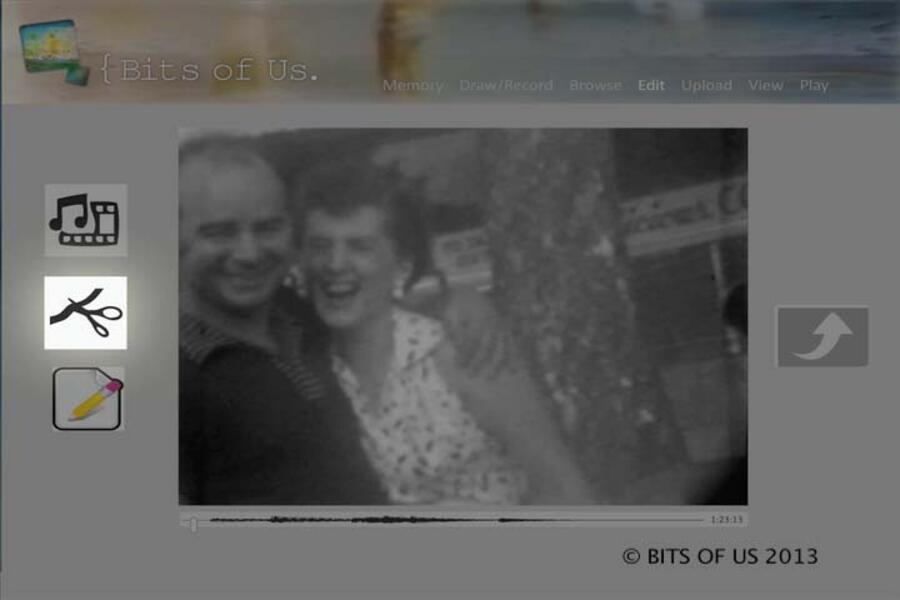 BITS OF US mockup
BITS OF US mockup -
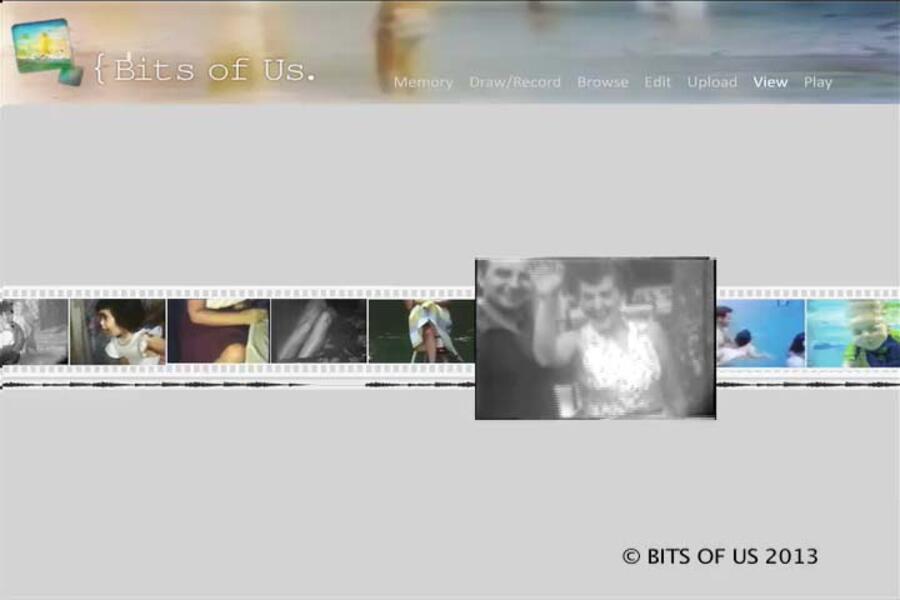 BITS OF US mockup
BITS OF US mockup -
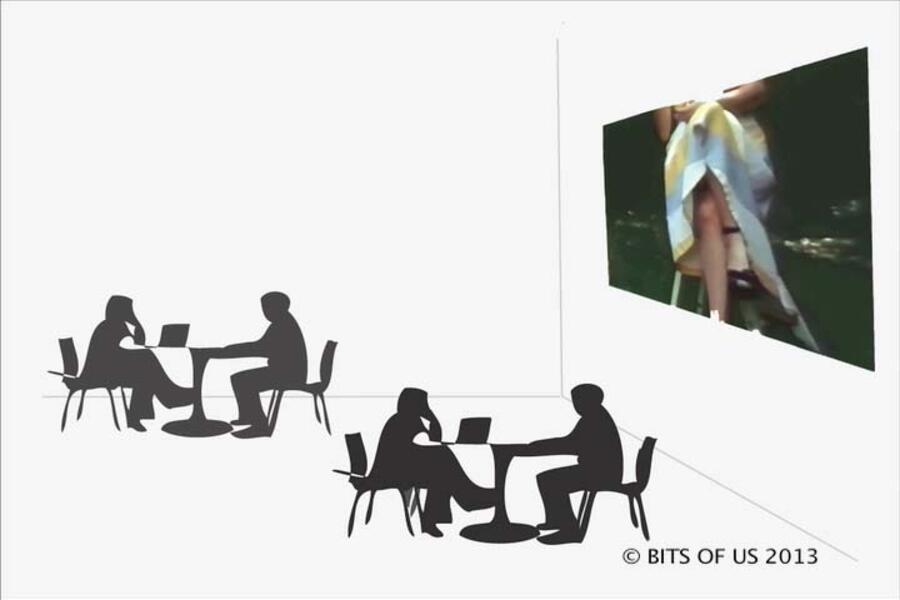 BITS OF US mockup
BITS OF US mockup -
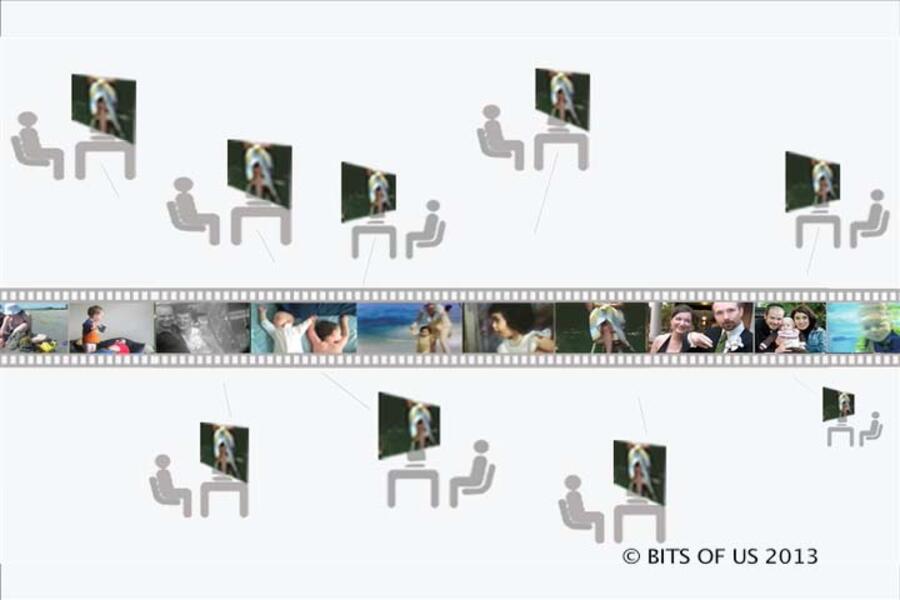 BITS OF US mockup
BITS OF US mockup -
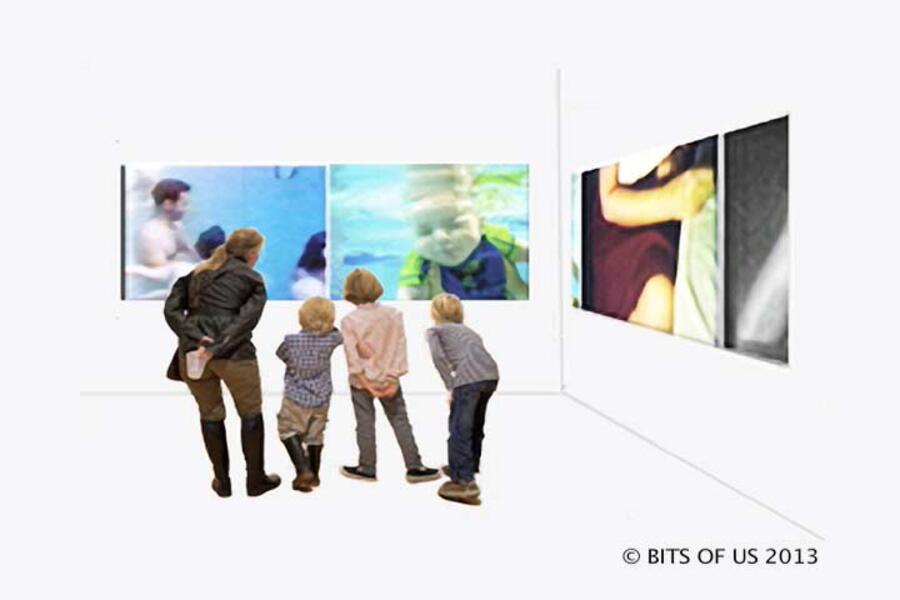 BITS OF US mockup
BITS OF US mockup -
BITS OF US Concept"Taking a family portrait is a relatively simple task and following certain established practices will net the usual haunting if not predictable outcome. Cindy Konits’s Bits of Us recognizes another passage in the technology of imaging, and challenges the viewer to relinquish the familiar, the predictable, the anticipated while expanding the cultural signature of the family. The picture remains just a picture unless it transgresses other boundaries of intent. Overcoming even the most mundane aspirations for our family pictures is no easy task, since it generally triggers memory over all else, and is often riddled with paralyzing nostalgia and sentimentality. Bits of Us aims at another possibility, of embracing chance as an artifact of dynamic interactive play. Bits of Us is not a program, but a set of conditions where the objective is not to resolve but to experience the rich collision of family realities through pictures and video.
-
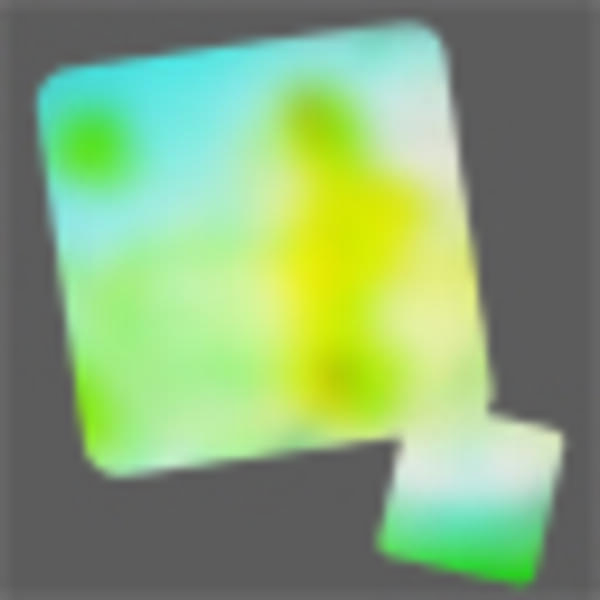 Favicon/www.bitsofus.org"As co-founder of the Radical Software video journal in 1970, the first of its kind to describe artists' experiments in working with the new medium of video, and as a pioneer of multiple channel video installation work, it is interesting to see the evolving manifestions of information exchange resonate in a media project such as BITS OF US. Infused with some of the same values and attitudes as in those early experiments, the Cindy Konits' BITS OF US continues to develop the democratic, and decentralized use of new technology and software to foster both private and collective memories in the context of the personal and larger human family". Beryl Korot, Video Artist https://en.wikipedia.org/wiki/Beryl_Korot
Favicon/www.bitsofus.org"As co-founder of the Radical Software video journal in 1970, the first of its kind to describe artists' experiments in working with the new medium of video, and as a pioneer of multiple channel video installation work, it is interesting to see the evolving manifestions of information exchange resonate in a media project such as BITS OF US. Infused with some of the same values and attitudes as in those early experiments, the Cindy Konits' BITS OF US continues to develop the democratic, and decentralized use of new technology and software to foster both private and collective memories in the context of the personal and larger human family". Beryl Korot, Video Artist https://en.wikipedia.org/wiki/Beryl_Korot -
 BITS OF US brochure
BITS OF US brochure
NOW I SEE KIEV IN MY DREAMS
My grandparents came to this country from Byelorussia and Lithuania. My
parents assimilated rapidly into American life, moving from the Lower East Side
of New York City to Jersey City, New Jersey, and finally to upper
-
middle class,
Anglo
-
Saxon Westfield,
New Jersey. My grandparents were very different from
my parents. They ate different foods, wore different clothes, and spoke to each
other in a language I didn’t understand. They died while I was still a child, and I
was never able to ask important questio
ns of them.
As a teenager, my curiosity about this lost world was aroused by the plight of
the Jews remaining in the Soviet Union. The restrictions on the practice of their
religion and on travel within and outside their country moved me to participate
in
the effort to gain their freedom. Their story became a metaphor for my
personal struggles and for the missing links to my past.
My grandparents came to this country from Byelorussia and Lithuania. My parents assimilated rapidly into American life, moving from the Lower East Side of New York City to Jersey City, New Jersey, and finally to upper-middle class, Anglo-Saxon Westfield, New Jersey. My grandparents were very different from my parents. They ate different foods, wore different clothes, and spoke to each other in a language I didn’t understand. They died while I was still a child, and I was never able to ask important questions of them.As a teenager, my curiosity about this lost world was aroused by the plight of the Jews remaining in the Soviet Union. The restrictions on the practice of their religion and on travel within and outside their country moved me to participate in the effort to gain their freedom. Their story became a metaphor for my personal struggles and for the missing links to my past.
Funded by a grant from the National Endowment for the Humanities, through the Maryland Humanities Council, Inc., the "Now I See Kiev in My Dreams": Words and Pictures of New Americans catalogue and traveling solo exhibition comprises a series of 22 30"x30" color portraits of immigrants from the former Soviet Union in Baltimore 1992, juxtaposed with photographs brought from their former homes and bilingual excerpts from oral histories. "Now I See Kiev In My Dreams" was shown at The Jewish Historical Society of Maryland, Baltimore Maryland, and The Weiner Judaic Museum of The Jewish Community Center of Greater Washington, Rockville Maryland. A selection of photographs from the exhibition are in the permanent collection of the Museum of the Jewish Diaspora, Tel Aviv Israel, and the Jewish Heritage Center Archives, Baltimore Maryland.
Too-Small Photo Exhibit Catches Immigrants' Strengths, John Dorsey Baltimore Sun March 1994. The "Now I See Kiev in My Dreams" exhibit at the Jewish Historical Society has faults, primarily its limited size. But its virtues are many, including its overall look. Konits' richly colored photographs capture their subjects informally in various activities -- arriving at the airport, sharing a meal, playing chess, at their jobs, relaxing. There's a straightforward look about these people that makes you feel as if you could sit down among them and be at home. And their spirit shines through Konits' pictures; their faces tell us they're undaunted. This is all testament to Konits' accomplishments with her camera. But it makes the viewer want more than what is available here. Twenty-two of Konits' photographs are too few... Better to have devoted the whole exhibition space at the Jewish Historical Society to "Kiev," if Konits has sufficient photographs; or, if she doesn't, to wait until she does".
-
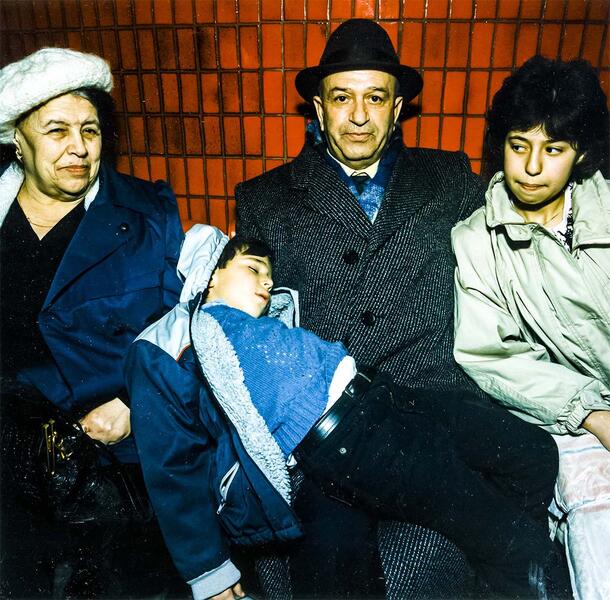 Family at Airport"My parents and grandmother wanted to go. Her son was in Baltimore and she was afraid to die without seeing him again. And I also thought that it was dangerous to stay. I was afraid… for example, we had our interview in Moscow on the day of the Putsch. We saw tanks, people with guns, no trams, no trolleybuses… ". 30"x 30" C-Print
Family at Airport"My parents and grandmother wanted to go. Her son was in Baltimore and she was afraid to die without seeing him again. And I also thought that it was dangerous to stay. I was afraid… for example, we had our interview in Moscow on the day of the Putsch. We saw tanks, people with guns, no trams, no trolleybuses… ". 30"x 30" C-Print -
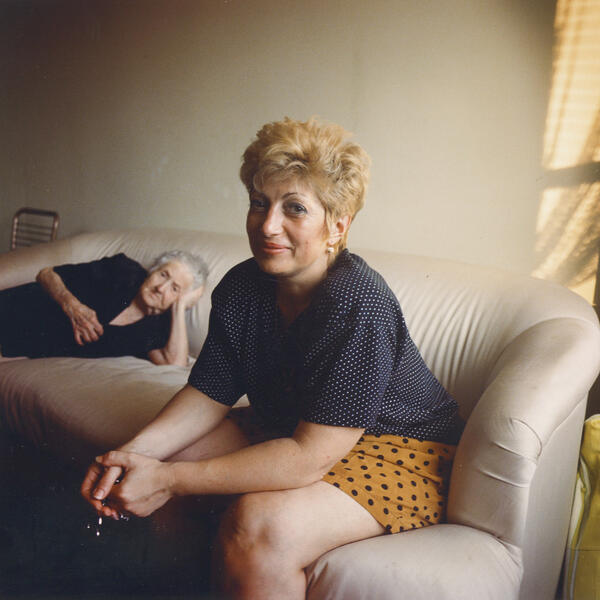 Sophia and Babushka30" x 30" C-Print
Sophia and Babushka30" x 30" C-Print -
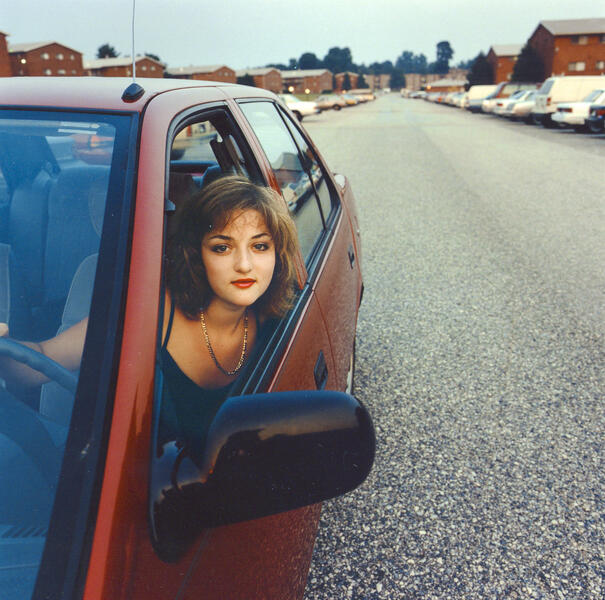 Red Car"I don’t understand American life. We had many nationalities in the Soviet Union, many different cultures—we didn’t mix and didn’t know them well. We just lived. And here we just live—we don’t mix with American people who are of many different cultures and nationalities, too. And I don’t think it’s necessary to mix… ". 30"x 30" C-Print
Red Car"I don’t understand American life. We had many nationalities in the Soviet Union, many different cultures—we didn’t mix and didn’t know them well. We just lived. And here we just live—we don’t mix with American people who are of many different cultures and nationalities, too. And I don’t think it’s necessary to mix… ". 30"x 30" C-Print -
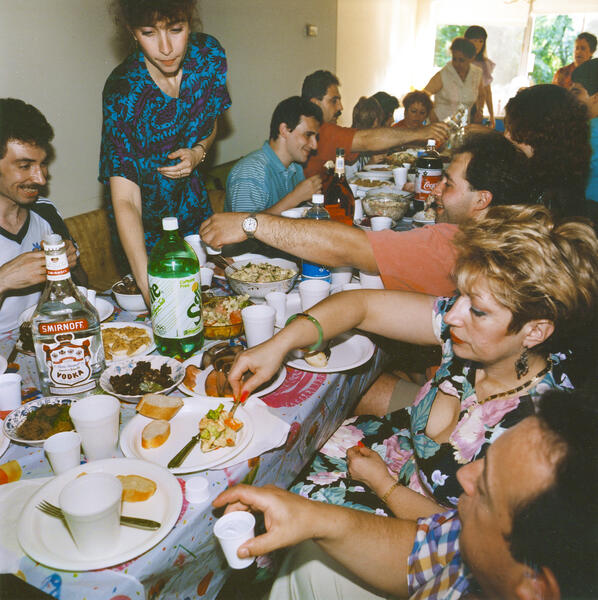 A Party"I think life is the same everywhere, but people are different. You can meet good people and you can meet bad people…In Baltimore we were surprised by all those small houses—it reminded me of some southern town near Sukhumi on the Black Sea, and I was expecting to see the sea somewhere nearby…Even the color of the air—it seems there should be a beach very close…". 30" x 30" C-Print
A Party"I think life is the same everywhere, but people are different. You can meet good people and you can meet bad people…In Baltimore we were surprised by all those small houses—it reminded me of some southern town near Sukhumi on the Black Sea, and I was expecting to see the sea somewhere nearby…Even the color of the air—it seems there should be a beach very close…". 30" x 30" C-Print -
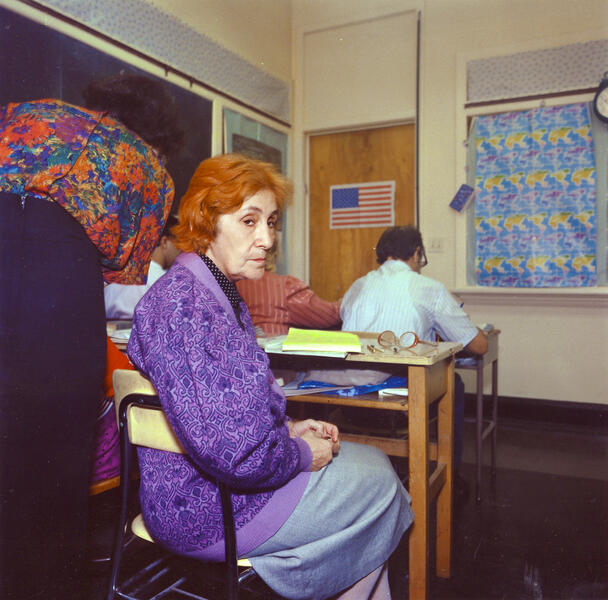 Learning English"I think when you come to the U.S.A. at age seventeen you can dream about being somebody—a great singer, or a doctor. I don’t have any dreams. Sometimes I like beautiful houses, but I don’t want to own them". 30" x 30"
Learning English"I think when you come to the U.S.A. at age seventeen you can dream about being somebody—a great singer, or a doctor. I don’t have any dreams. Sometimes I like beautiful houses, but I don’t want to own them". 30" x 30" -
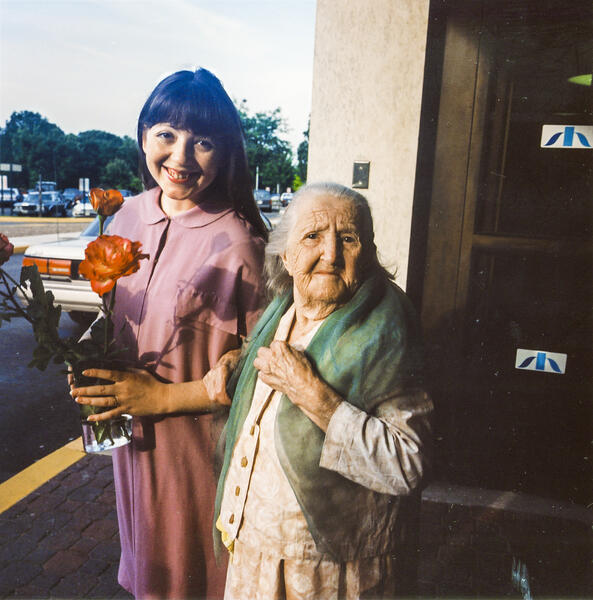 Faina and Babushka30" x 30" C-Print
Faina and Babushka30" x 30" C-Print -
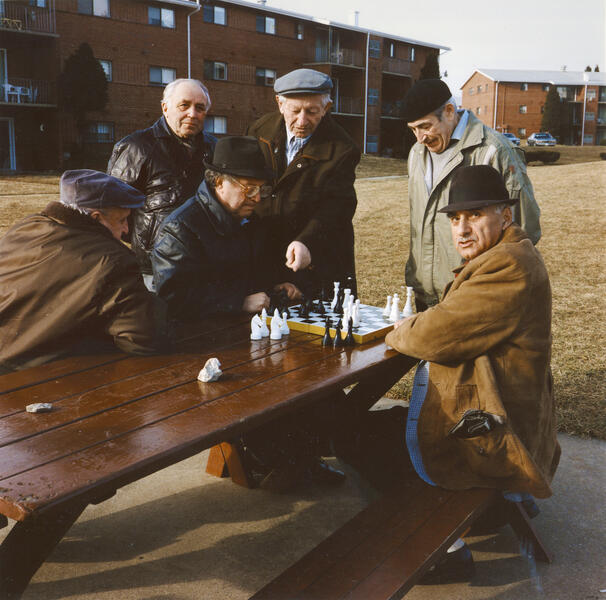 Chess Men"We were patriots during the war…We fought not only against fascists, but for our motherland…to find that she was not like a mother, but like a bad stepmother to all of us". 30" x 30"
Chess Men"We were patriots during the war…We fought not only against fascists, but for our motherland…to find that she was not like a mother, but like a bad stepmother to all of us". 30" x 30" -
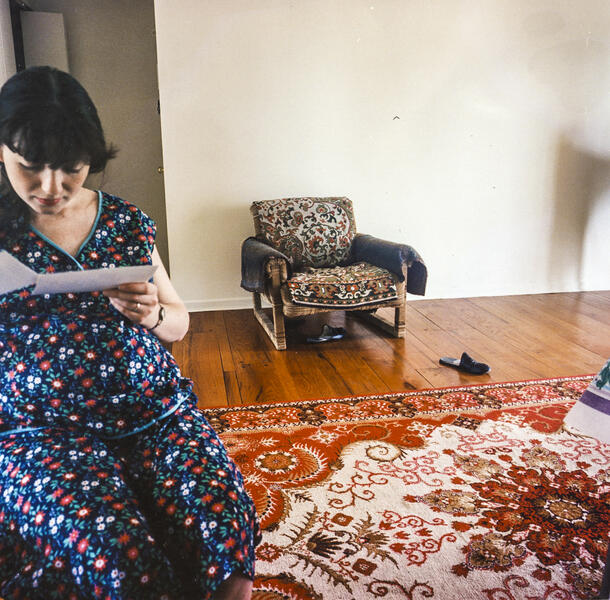 Now I See Kiev in My Dreams"I miss my mother, father, brother, cousins…My cousins and aunts will never come here, because they are married to Russian or Byelorussian men and these men are in the army and they have their careers. Now I see them and Kiev in my dreams. So during the day I walk here and at night——I walk in Kiev". 30" x 30" C-Print
Now I See Kiev in My Dreams"I miss my mother, father, brother, cousins…My cousins and aunts will never come here, because they are married to Russian or Byelorussian men and these men are in the army and they have their careers. Now I see them and Kiev in my dreams. So during the day I walk here and at night——I walk in Kiev". 30" x 30" C-Print -
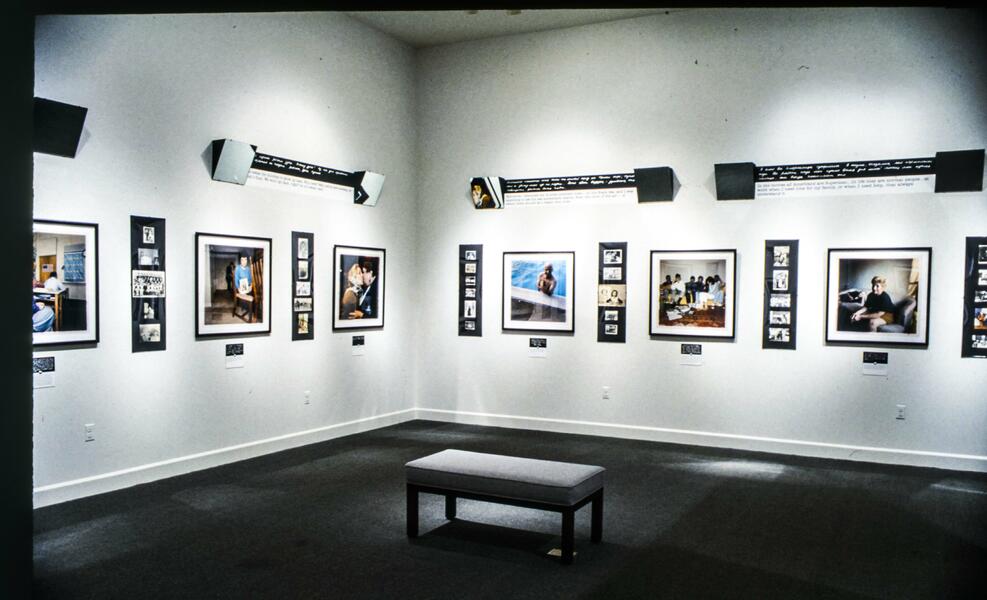 NOW I SEE KIEV IN MY DREAMS Installation View
NOW I SEE KIEV IN MY DREAMS Installation View
THE BEST WOMAN FOR THE JOB
Traveling solo exhibition of 40 10"x10" silver gelatin prints with quotes from interviews, funded by the National Endowment for the Arts through the Maryland Arts Council. The exhibition was shown at The Baltimore Museum of Industry, Baltimore Maryland, The Slater Mill Historic Site, Pawtucket, Rhode Island, and The American Labor Museum, Heldon, New Jersey.
Hammering out tough new turf
March 02, 1992|By Wil S. Hylton | Wil S. Hylton,Staff Writer
Cindy Gail Konits' pictures make viewers think twice about sexual stereotypes.
On display at the Baltimore Museum of Industry, her exhibit of 40 black and white photographs depicts 23 working women in fields historically dominated by men. The show, "The Best Woman for the Job," introduces women in fields such as construction, railroad engineering and steelworking, which the photographer hopes will expose viewers to non-traditional career options for women and "show young women that it can be done."
Exhibited through March 31 as part of Women's History Month, the portraits are accompanied by brief statements expressing the obstacles and challenges of working in these fields. "You have to put blinders on to a certain extent as far as what men's reaction will be," explained Ms. Konits, who has been documenting women in non-traditional jobs since 1990, "and you have to work hard to prove that you're a real good worker -- and a real team worker." The museum chose to present the exhibit to give the women recognition and shine the spotlight on the less-celebrated advocates of women's equality.
These women have opened many doors for other women, said the museum's assistant director, Ann Steele, "to make a niche for themselves in a field that's traditionally male."
Ms. Konits said, "I think that we're in a sort of transition period as far as women getting jobs in these fields. The numbers are still small even though we all thing, 'Women can get jobs where they want,' I think that by seeing it, it reminds you that there are still a few (women) there -- that we still have a way to go. It reminds you that just because (the opportunity) is there, it doesn't mean it's easy for these women."
Nearly all of the profiled women faced difficulties being included by co-workers upon entering their jobs, Ms. Konits said, but all were soon accepted as members of the team, as the men learned "how to work with a woman and the women proved that they were there to do the work." In the end, Ms. Konits said, learning to work together is what ensures equal treatment.
Sharon Eder, whom Ms. Konits regrets only being able to profile under one profession, doubles as a carpenter by day and a private detective by night. Working as a carpenter for seven years, she has faced difficulty being hired for some jobs, often being told that a woman could not handle the work. At her last job site, she was nearly denied a position by the boss at first, she remembered, "and then seven weeks later he made me a foreman!"
Ms. Eder believes her successful performance on the job has helped other women work as carpenters. The best way to teach people that women can work as well as men, she said, is "me getting out there and not only proving that I could do the work, but that I could be a boss, too." As an indication of progress, she noted that in the past year she has worked with more women than in her previous six years as a carpenter.
"I think [the photographic display] will open eyes in seeing that it doesn't matter what sex you are. I think it will help tremendously," said steelworker Kathy Damico, who is also profiled in the exhibit. During her 16 years on the job -- as one of only two women in the mechanical department at Bethlehem Steel -- she initially experienced difficulties, but co-workers gradually became more understanding, she said. Working beside men proved to them that she could do the work. "It kind of broke the barrier," she said.
The goal of the exhibit is to show audiences the struggle these women are experiencing to gain equality at work, Ms. Konits said. "Their access to the jobs of their choice is actually very limited because men simply don't know how to work with a woman. The women in these photographs are teaching men on a day-to-day basis how to work with a woman."
http://articles.baltimoresun.com/1992-03-02/features/1992062207_1_women-in-fields-women-equality-women-can-work
-
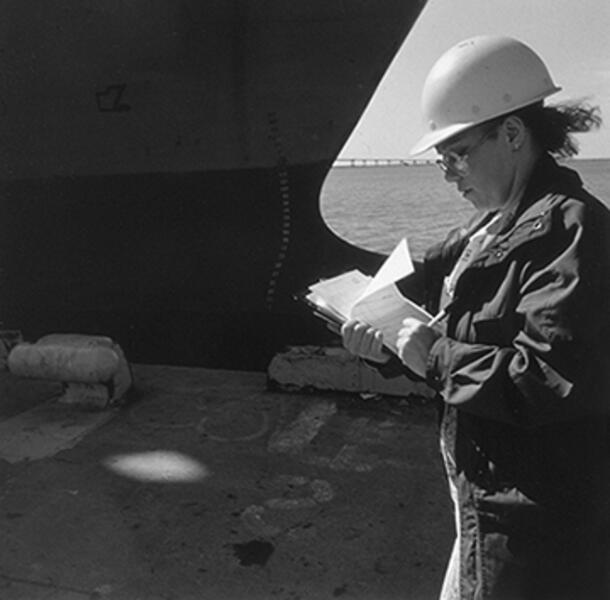 JOANN GIESEY Terminal Control Specialist"People feel that working on the waterfront is a man's job. The hardest thing in this job for a woman is to be able to handle the way men talk to you, men who are not used to working with a woman. They sometimes look at you funny. You block it out and do your best job." 12" x 12" Archival Pigment Print
JOANN GIESEY Terminal Control Specialist"People feel that working on the waterfront is a man's job. The hardest thing in this job for a woman is to be able to handle the way men talk to you, men who are not used to working with a woman. They sometimes look at you funny. You block it out and do your best job." 12" x 12" Archival Pigment Print -
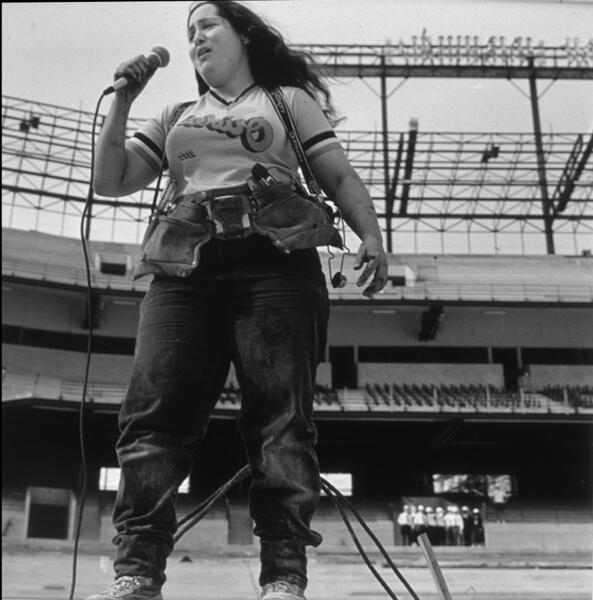 BETH CLINE Master Plumber/Gasfitter"I don't know why everybody divides things up into man's things and woman's things." 12" x 12" Archival Pigment Print
BETH CLINE Master Plumber/Gasfitter"I don't know why everybody divides things up into man's things and woman's things." 12" x 12" Archival Pigment Print -
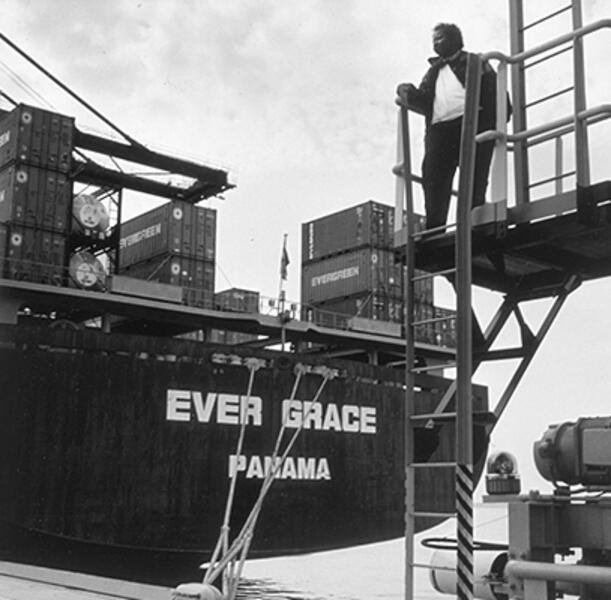 SAVANNAH CUNNINGHAM Longshoreman"I've been working on the docks for almost twenty years. They tried to get rid of me in the beginning by saying there was no work. But I saw they gave work to the guy behind me in line so I kept coming back. We did heavy lifting and hard work back then that the young guys won't even do today." 12" x 12" Archival Pigment Print
SAVANNAH CUNNINGHAM Longshoreman"I've been working on the docks for almost twenty years. They tried to get rid of me in the beginning by saying there was no work. But I saw they gave work to the guy behind me in line so I kept coming back. We did heavy lifting and hard work back then that the young guys won't even do today." 12" x 12" Archival Pigment Print -
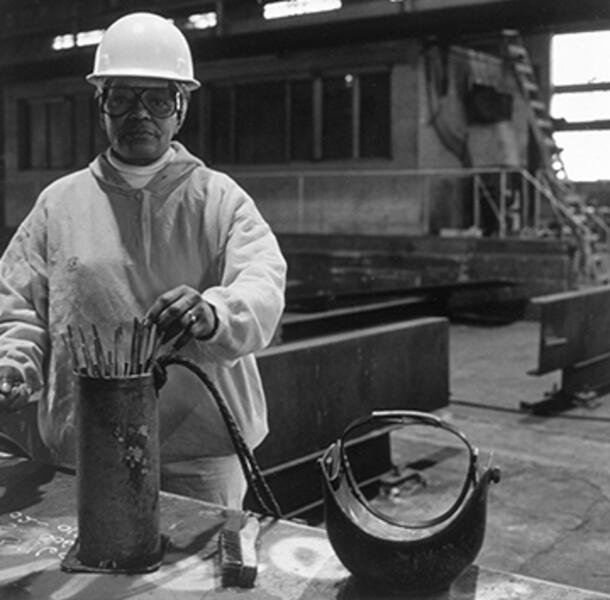 JEAN TYLER Shipfitter"I don't like to lose my femininity. When I'm working I always wear a fragrance, so when the men go by, they know the difference." 12" x 12" Archival Pigment Print
JEAN TYLER Shipfitter"I don't like to lose my femininity. When I'm working I always wear a fragrance, so when the men go by, they know the difference." 12" x 12" Archival Pigment Print -
 SHARON EDER Carpenter"There were always men giving me a hard time, harassing me. Then I'd be on a job about two weeks and they'd say, 'she can do it'!" 12" x 12" Archival Pigment Print
SHARON EDER Carpenter"There were always men giving me a hard time, harassing me. Then I'd be on a job about two weeks and they'd say, 'she can do it'!" 12" x 12" Archival Pigment Print -
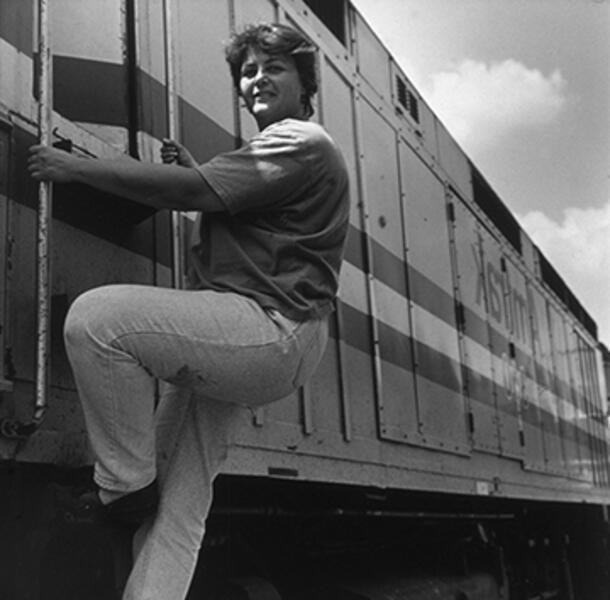 BECKY TRESSLER Locomotive Passenger Engineer"A lot of guys drop the macho image once we're in the engine working together. They realize that we can get the job done without false pretenses. This makes the work environment much easier and enjoyable." 12" x 12" Archival Pigment Print
BECKY TRESSLER Locomotive Passenger Engineer"A lot of guys drop the macho image once we're in the engine working together. They realize that we can get the job done without false pretenses. This makes the work environment much easier and enjoyable." 12" x 12" Archival Pigment Print -
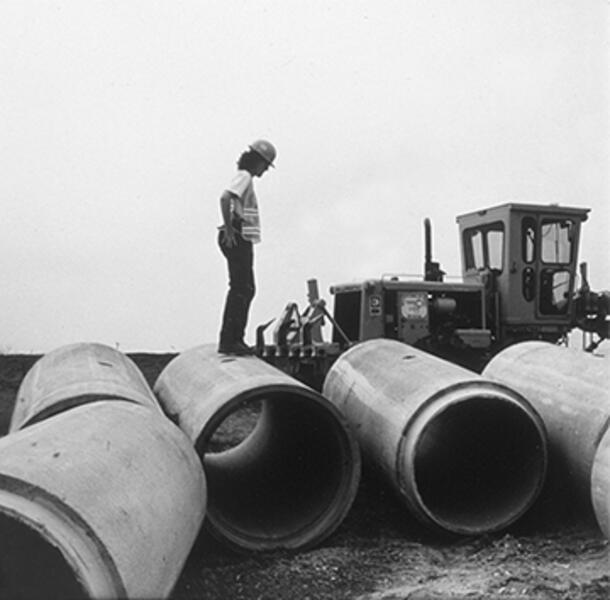 BECKY SMITH Highway Engineer"I was waiting for my knight in shining armor to marry me, but he never showed up. So I had to take care of myself." 12" x 12" Archival Pigment Print
BECKY SMITH Highway Engineer"I was waiting for my knight in shining armor to marry me, but he never showed up. So I had to take care of myself." 12" x 12" Archival Pigment Print -
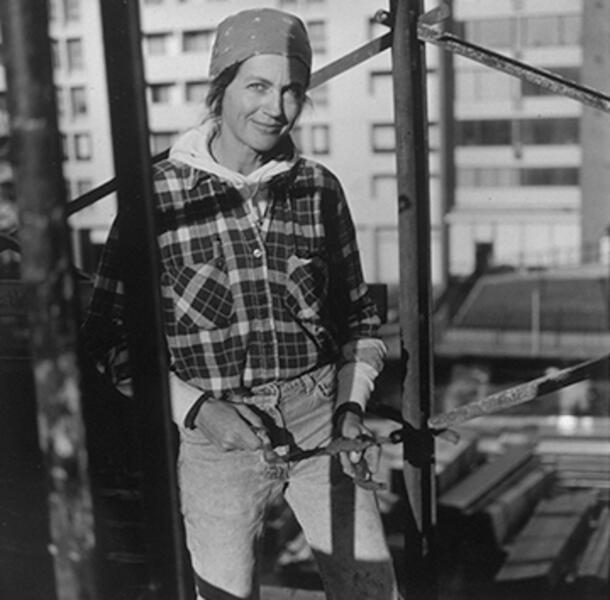 BARBARA MOORE Bricklayer, President of Bricklayers and Allied Craftsmen, Local #1 of Maryland"I believe women are equal to men. I'm not sure these guys believe that. But instead of getting into a debate with them about our different world views, I have survived by trying to concentrate on what we have in common and improving our working conditions. I also survived by working with the union, because the Union Apprenticeship Program guaranteed that I had the same training and education as men." 12" x 12" Archival Pigment Print
BARBARA MOORE Bricklayer, President of Bricklayers and Allied Craftsmen, Local #1 of Maryland"I believe women are equal to men. I'm not sure these guys believe that. But instead of getting into a debate with them about our different world views, I have survived by trying to concentrate on what we have in common and improving our working conditions. I also survived by working with the union, because the Union Apprenticeship Program guaranteed that I had the same training and education as men." 12" x 12" Archival Pigment Print -
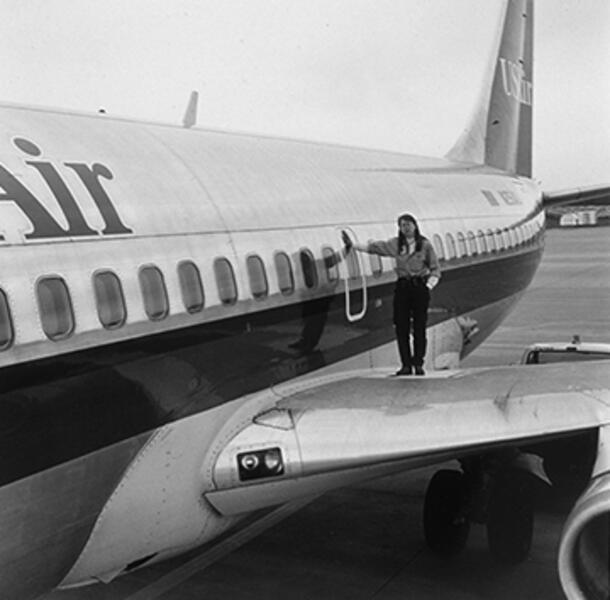 CAROL MCKECHNIE Airline Mechanic"Some of the guys worried that they were going to have to open the door for me. I put them at ease. I don't ask them to do my job for me. I help everybody. My main goal is just to get the plane out, whether there are thirty of us or just one. My main goal is just to get the plane out on time." 12" x 12" Archival Pigment Print
CAROL MCKECHNIE Airline Mechanic"Some of the guys worried that they were going to have to open the door for me. I put them at ease. I don't ask them to do my job for me. I help everybody. My main goal is just to get the plane out, whether there are thirty of us or just one. My main goal is just to get the plane out on time." 12" x 12" Archival Pigment Print -
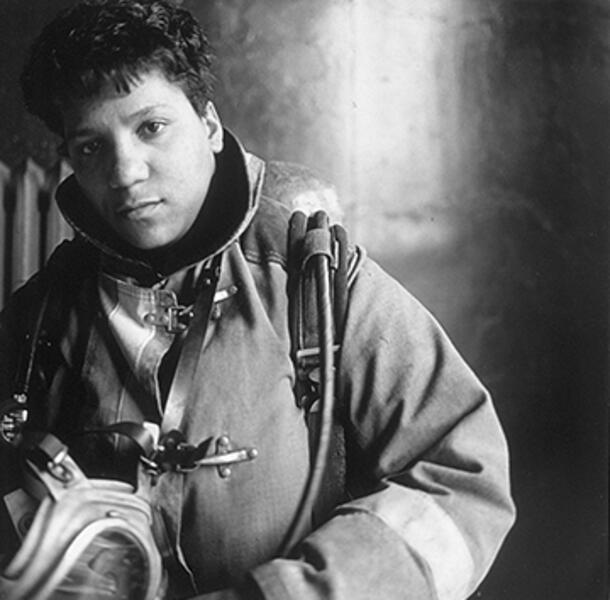 VERNESE HILTON Firefighter"At first is was a bit like being under a microscope. But then they know you work, you do your share. They've gotten used to me like I've gotten used to them." 12" x 12" Archival Pigment Print Fortunately, women in the non-traditional roles depicted in this series are not entirely rare, though they are still strikingly rare today, 25 years after these photographs were created! The woman who was in 1990, and is today pursuing a career as an airline mechanic, railroad engineer, laborer, or carpenter is often defying the expectations of family, friends, and male co-workers. I would like this project to credit them for their courage and tenacity as role models for others, male and female, to make independent choices.
VERNESE HILTON Firefighter"At first is was a bit like being under a microscope. But then they know you work, you do your share. They've gotten used to me like I've gotten used to them." 12" x 12" Archival Pigment Print Fortunately, women in the non-traditional roles depicted in this series are not entirely rare, though they are still strikingly rare today, 25 years after these photographs were created! The woman who was in 1990, and is today pursuing a career as an airline mechanic, railroad engineer, laborer, or carpenter is often defying the expectations of family, friends, and male co-workers. I would like this project to credit them for their courage and tenacity as role models for others, male and female, to make independent choices.
THE VEIL OF INTENT
Two weeks prior to the opening of the exhibition, I received a letter from Mariana S. Simpson, Chief Curator of the Walters Art Gallery, stating that the work could not be shown for reasons of content and was, therefore, censored from the exhibition.
Coincidentally, that same week the works entitled “Amuro Puro” by Kukuli Velarde and “Queen for a Day” by David Reynolds, were removed from exhibition spaces at the Maryland Institute, College of Art, along with AIDS/HIV informational posters and “A Day Without Art” announcements in preparation for Portfolio Day weekend, all for reasons of content.
Although the works were reinstalled in their appropriate exhibition spaces the following Monday morning, this incident triggered a highly public response from faculty and students, forcing one of the most prominent cultural institutions in Baltimore to examine its position on the issue of censorship.
THE VEIL OF INTENT is my personal account of the events surrounding the censorship not only of my own work, but also the work of fellow artists within this specific community.
-
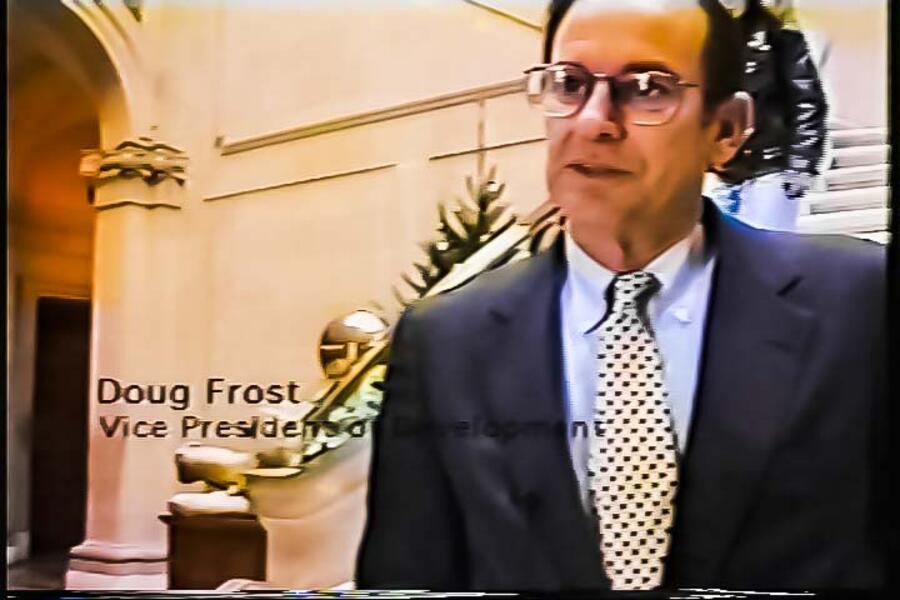 Being Good Film StillDavid Frost MICA Vice President of Development: “What I heard about you was how mature you were in how constructively you had the position... rather than just bitch and moan and run to the newspapers, that kind of thing... that you were basically taking that experience and building on it… and I’ve heard this from two or three people, so it was…really quite complimentary.”
Being Good Film StillDavid Frost MICA Vice President of Development: “What I heard about you was how mature you were in how constructively you had the position... rather than just bitch and moan and run to the newspapers, that kind of thing... that you were basically taking that experience and building on it… and I’ve heard this from two or three people, so it was…really quite complimentary.” -
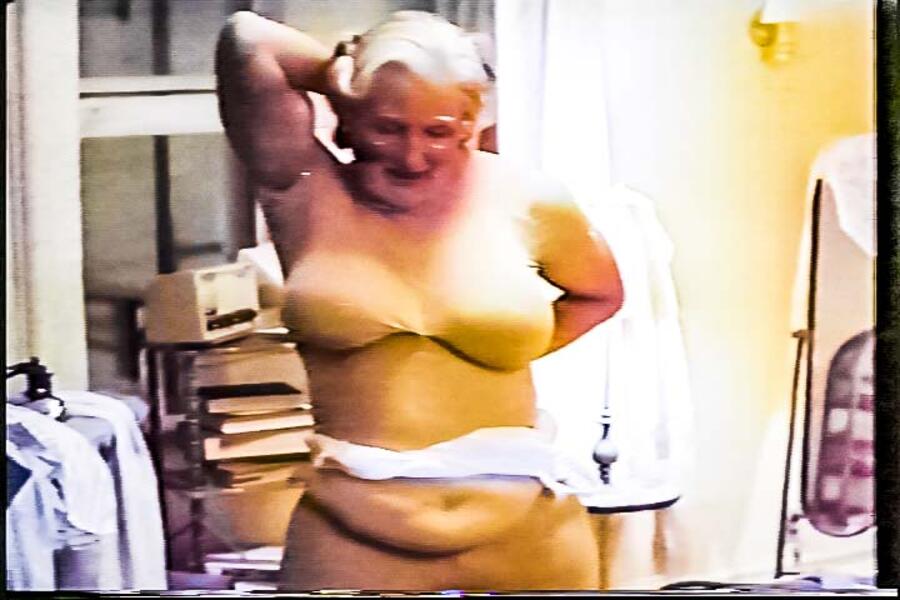 The Social Deviant Film StillThe Cross-Dressing “Mrs. Doubtfire” was the third highest grossing film in 194. Mrs.Doubtfire grossed $219 million in 1994.
The Social Deviant Film StillThe Cross-Dressing “Mrs. Doubtfire” was the third highest grossing film in 194. Mrs.Doubtfire grossed $219 million in 1994. -
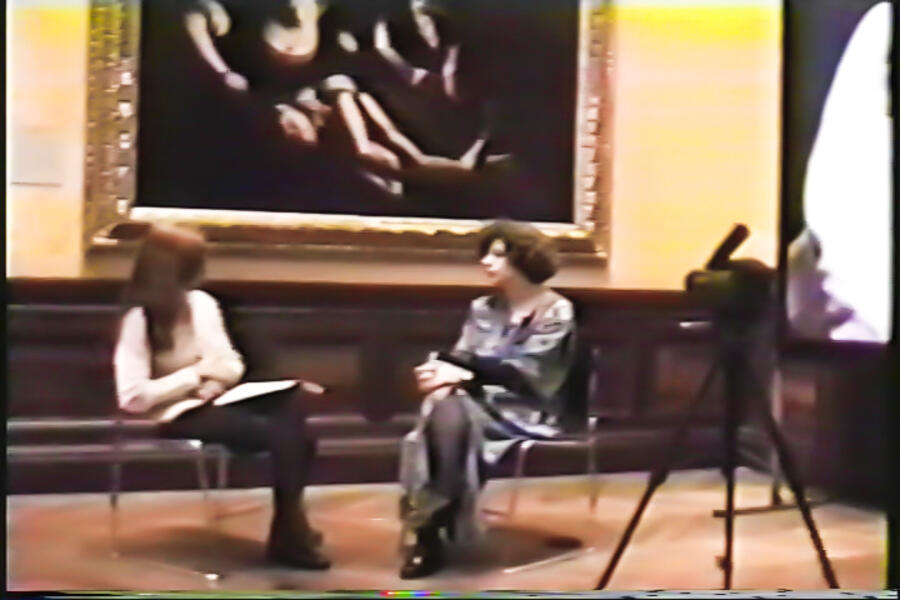 Abduction vs. Rape Film StillLisa Corin: “No, not rape. What’s represented is abduction. Big difference. What we normally see is… he’s got his arms around her and he’s pulling her away, but we never actually see intercourse take place in a painting.” Cindy Konits: No, but we see a reference, an inference”. Lisa Corrin: “The reason we should call such things abductions and not rape is because rape is a horrible thing… If you mislead people into thinking that this… mere abduction… it almost looks… its depicted so romantically… is rape, then people will leave thinking that rape isn’t such a bad thing after all”.
Abduction vs. Rape Film StillLisa Corin: “No, not rape. What’s represented is abduction. Big difference. What we normally see is… he’s got his arms around her and he’s pulling her away, but we never actually see intercourse take place in a painting.” Cindy Konits: No, but we see a reference, an inference”. Lisa Corrin: “The reason we should call such things abductions and not rape is because rape is a horrible thing… If you mislead people into thinking that this… mere abduction… it almost looks… its depicted so romantically… is rape, then people will leave thinking that rape isn’t such a bad thing after all”. -
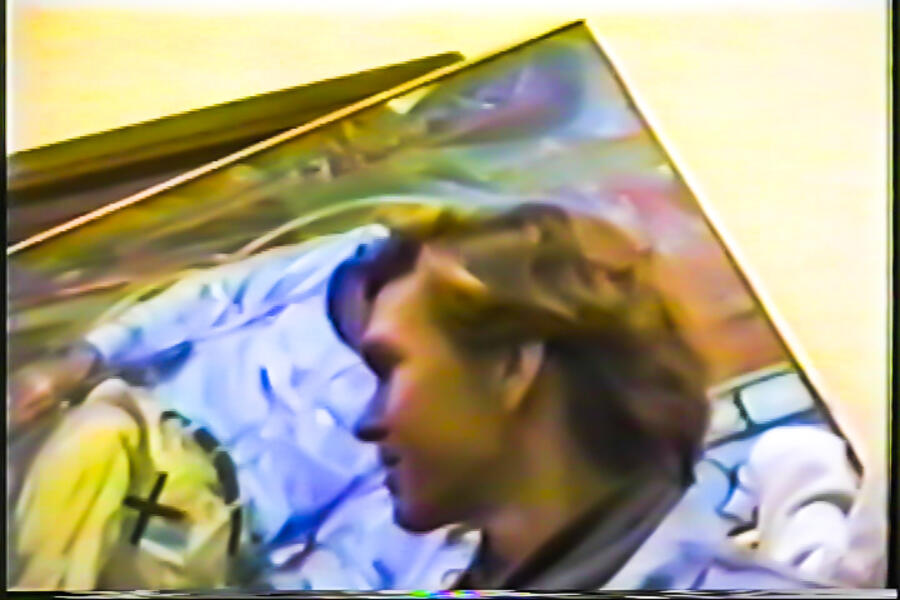 The Distress Flag Film StillProtestors: "Censorship is wrong! Censorship is wrong!" "Its a painting of Fred!"
The Distress Flag Film StillProtestors: "Censorship is wrong! Censorship is wrong!" "Its a painting of Fred!" -
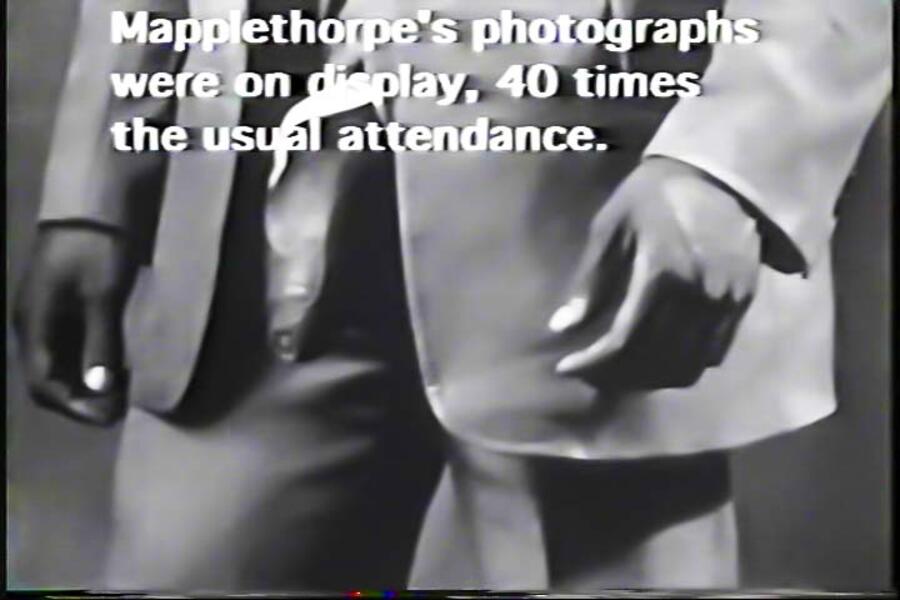 The Phenomenon Film StillAfter the censoring of the Mapplethorpe exhibition by the Corcoran Museum of Art, 48,8633 people visited the Washington Project for the Arts during the 24 days Mapplethorpe’s photographs were on display, 40 times the usual attendance.
The Phenomenon Film StillAfter the censoring of the Mapplethorpe exhibition by the Corcoran Museum of Art, 48,8633 people visited the Washington Project for the Arts during the 24 days Mapplethorpe’s photographs were on display, 40 times the usual attendance. -
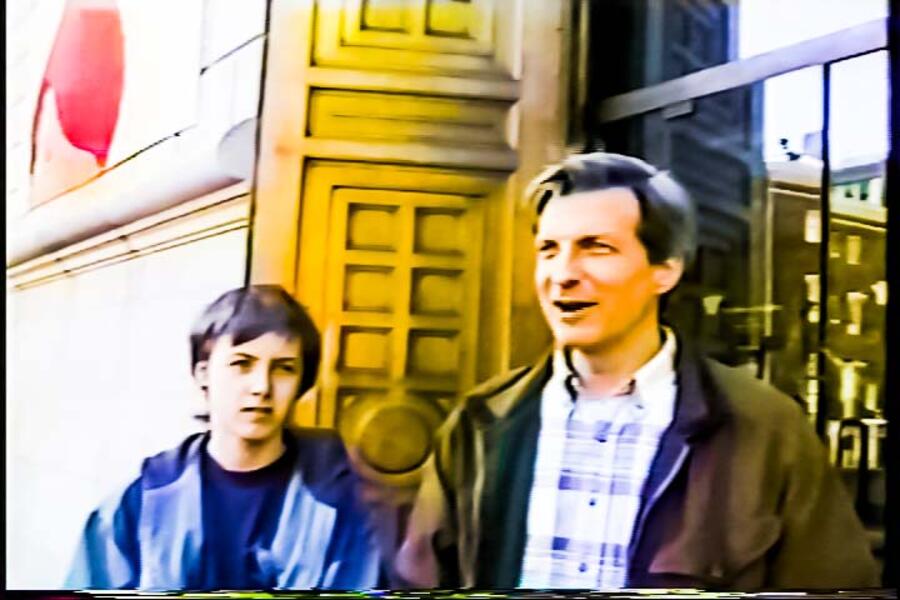 The Public Fiilm Still"No I don't think that's the role of an art museum... to protect me, I mean. That's my job... to make a judgement myself, for me and for my children".
The Public Fiilm Still"No I don't think that's the role of an art museum... to protect me, I mean. That's my job... to make a judgement myself, for me and for my children". -
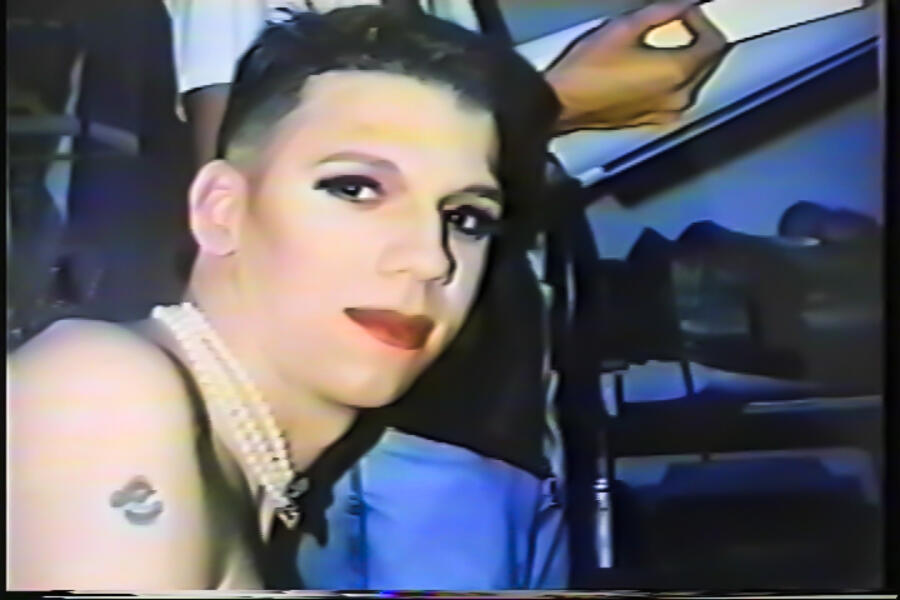 In Memorium: David Reynolds 1969-1995 Film StillSuzanne Collins, Channel 13, Eyewitness News: “A special memorial show of drag queen photos done by a senior who recently committed suicide were removed.”
In Memorium: David Reynolds 1969-1995 Film StillSuzanne Collins, Channel 13, Eyewitness News: “A special memorial show of drag queen photos done by a senior who recently committed suicide were removed.” -
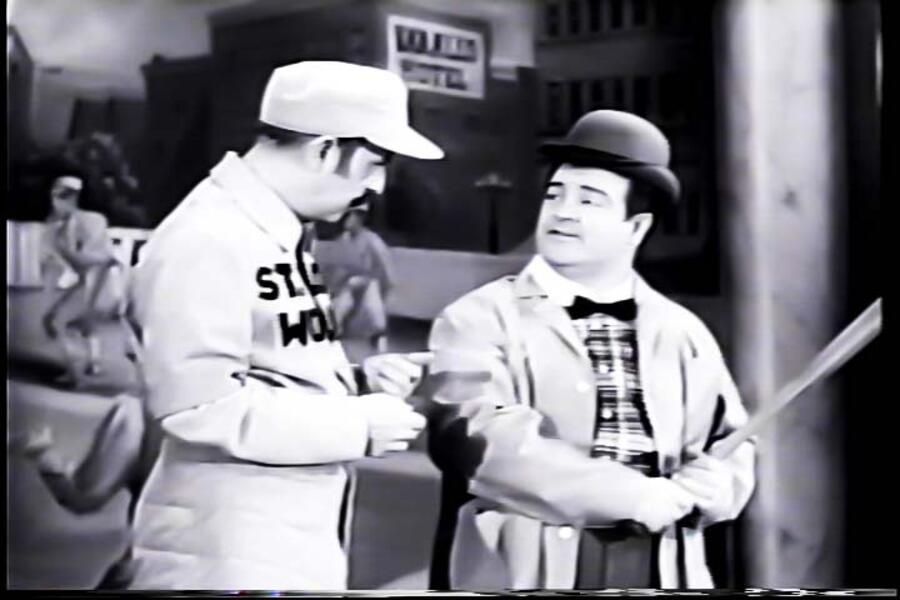 Who's on First? Film StillFred Lazarus, MICA President: "I think it is important that we have opportunities to raise issues about things in society that need to be questioned. I mean you’ve done that with an important piece here. You’re raising important issues. Now the question is what are the forms in which we can use this. And how can we get it out so people can see the work and can think about these things. And I think that is an issue that we all need to talk about how that happens today and where it happens and how do we deal with it". Cindy Konits: “How what happens? The seeing of this piece?” Fred Lazarus: “Yeah,... yeah!” Abbott: "We have, ah, Who’s on first, What’s on second, and I don’t know’s on third…" Fred Lazarus: "We need to make sure these things get exposed to people and people can think about them, and spend some time on ‘em". Cindy Konits: "Better to show them than talk about it, though". Fred Lazarus: "No I mean, well, there’s,… you gotta show them, but you gotta talk about them first because you gotta find the forums through which it can happen". Costello: “Well then, who’s playin first? Abbott: “Yeah.” Costello: “I mean the fella who’s name is on third base.” Abbott: “Who.” Cindy Konits: “Or can’t you show it and talk about it after, and that might be the way to mitigate…” Fred: “Well, you can if you can find the forums to show it in. And people will feel comfortable doing that. But if they don’t, then we need to talk about it first and try and figure out why and make that it doesn’t get put on the shelf”. Costello: “Have you got a first baseman on first?” Abbott: “Certainly”. Costello: “Then who’s playing first?” Abbott: “Absolutely!”
Who's on First? Film StillFred Lazarus, MICA President: "I think it is important that we have opportunities to raise issues about things in society that need to be questioned. I mean you’ve done that with an important piece here. You’re raising important issues. Now the question is what are the forms in which we can use this. And how can we get it out so people can see the work and can think about these things. And I think that is an issue that we all need to talk about how that happens today and where it happens and how do we deal with it". Cindy Konits: “How what happens? The seeing of this piece?” Fred Lazarus: “Yeah,... yeah!” Abbott: "We have, ah, Who’s on first, What’s on second, and I don’t know’s on third…" Fred Lazarus: "We need to make sure these things get exposed to people and people can think about them, and spend some time on ‘em". Cindy Konits: "Better to show them than talk about it, though". Fred Lazarus: "No I mean, well, there’s,… you gotta show them, but you gotta talk about them first because you gotta find the forums through which it can happen". Costello: “Well then, who’s playin first? Abbott: “Yeah.” Costello: “I mean the fella who’s name is on third base.” Abbott: “Who.” Cindy Konits: “Or can’t you show it and talk about it after, and that might be the way to mitigate…” Fred: “Well, you can if you can find the forums to show it in. And people will feel comfortable doing that. But if they don’t, then we need to talk about it first and try and figure out why and make that it doesn’t get put on the shelf”. Costello: “Have you got a first baseman on first?” Abbott: “Certainly”. Costello: “Then who’s playing first?” Abbott: “Absolutely!” -
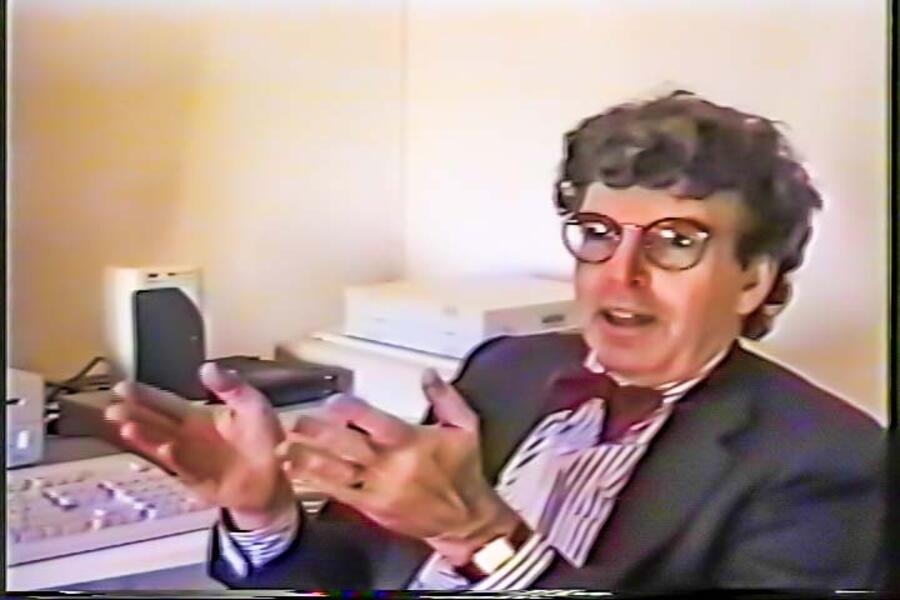 Subtexts: Fred Lazarus President Maryland Institute College of Art Film StillFred Lazarus: "This piece wasn’t homophobic. It dealt with a sexually deviant kind of behavior, kind of activity. Jena was much more concerned about the fact that David committed suicide. And that we were showing the work of a student that really had severe psychological, emotional problems and ended up committing suicide. And there’s just so much myth out there of artists today. And I think that’s where she was coming from".
Subtexts: Fred Lazarus President Maryland Institute College of Art Film StillFred Lazarus: "This piece wasn’t homophobic. It dealt with a sexually deviant kind of behavior, kind of activity. Jena was much more concerned about the fact that David committed suicide. And that we were showing the work of a student that really had severe psychological, emotional problems and ended up committing suicide. And there’s just so much myth out there of artists today. And I think that’s where she was coming from". -
THE VEIL OF INTENT Run Time: 35:33My interactive CD-ROM entitled “The I for Pleasure” was selected by Joaneath Spicer, Curator for the Walters Art Gallery, Lisa Corrin, Curator for the Contemporary Museum, and Barry Nemett, faculty member of the Maryland Institute, College of Art, to be included in the "Going for Baroque" exhibition at the Walters Art Gallery. Two weeks prior to the opening of the exhibition, I received a letter from Mariana S.
THE I FOR PLEASURE
“The I for Pleasure” enabled the viewer to explore the provocative sexuality of Baroque paintings, including several from the Walters’ collection, in the context of graphics commonly encountered on the Internet in the years of its early popularity when the multimedia interface called the World Wide Web was first introduced. The World Wide Web and Baroque art each emerged in an era of remarkable technological and scientific advancement.
In fact, images downloaded from “the Web” were compared directly with paintings from the Walters Art Gallery Baroque Collection itself, such as Francesco Furnini's "St. Agatha" painting.
-
The Well-Tempered Clavier I by Glenn Gould with Internet Dial-up Recording"Self-Portrait as the Allegory of Painting" Artemisia Gentileschi "What determines me at the most profound level in the visible, is the gaze that is outside. It is through the gaze that I enter light and it is from the gaze that I receive its effects". Jacques Lacan
-
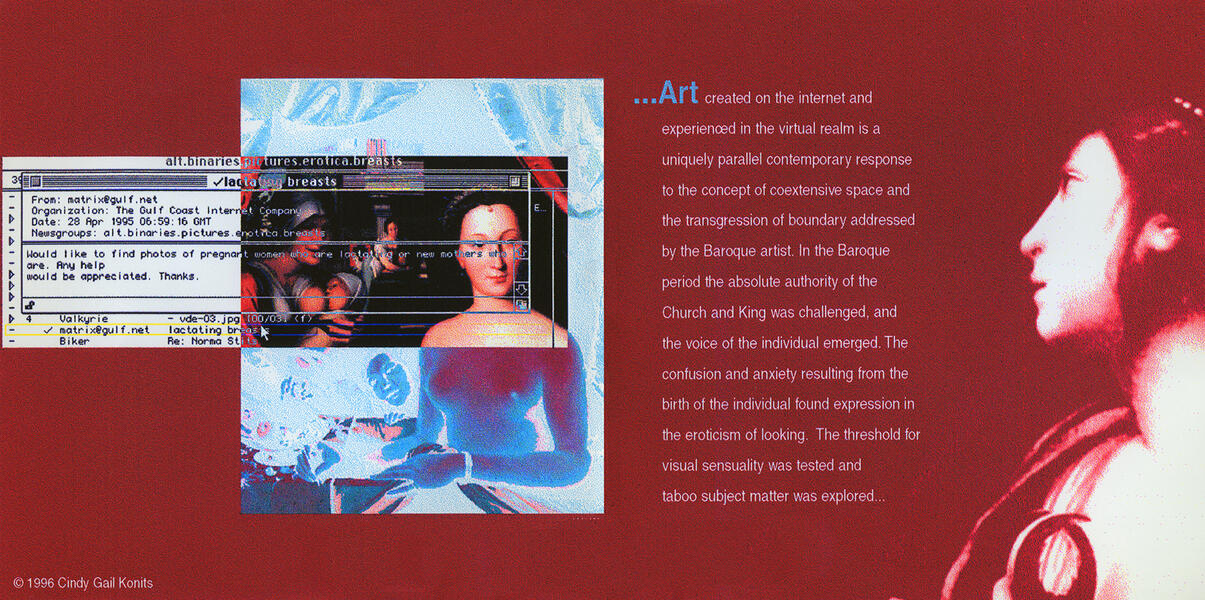 Dr. Ellen Hardy, Associate Curator International Center of PhotographyDear Ms. Konits: "The I for Pleasure" seemed to me to be a thoughtful exploration of themes in and around Baroque painting. Your craft and technique in this piece is impressive--I have seldom seen so nuanced and visually satisfying a CD-ROM piece. Visual pleasure is obviously important in this work as content, so this is particularly valuable. And as we are a New York institution, we are perhaps a bit harder to shock than our colleagues in Baltimore--your work's style and subject matter would certainly be exhibitable in our galleries!" Dr. Ellen Hardy, Associate Curator International Center of Photography
Dr. Ellen Hardy, Associate Curator International Center of PhotographyDear Ms. Konits: "The I for Pleasure" seemed to me to be a thoughtful exploration of themes in and around Baroque painting. Your craft and technique in this piece is impressive--I have seldom seen so nuanced and visually satisfying a CD-ROM piece. Visual pleasure is obviously important in this work as content, so this is particularly valuable. And as we are a New York institution, we are perhaps a bit harder to shock than our colleagues in Baltimore--your work's style and subject matter would certainly be exhibitable in our galleries!" Dr. Ellen Hardy, Associate Curator International Center of Photography -
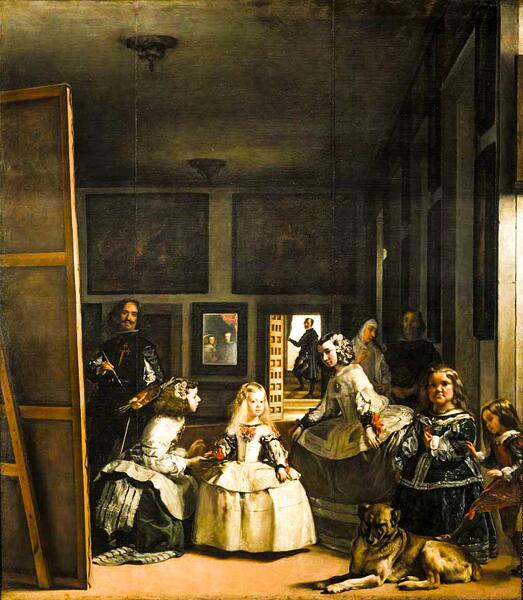 Las Meninas by Diego VelazquezDue to its self conscious representations of a web of gazes and resulting network of visual relationships, the Las Meninas painting is the center hub of interactivity on the CD-ROM from which the viewer embarks on a series of paths enabling and exploration of the provocative sexuality of Baroque paintings, including several from the Walters’ collection, in the context of graphics commonly encountered on the Internet in the years of its early popularity when the multimedia interface called the World Wide Web was first introduced. The World Wide Web and Baroque art each emerged in an era of remarkable technological and scientific advancement.
Las Meninas by Diego VelazquezDue to its self conscious representations of a web of gazes and resulting network of visual relationships, the Las Meninas painting is the center hub of interactivity on the CD-ROM from which the viewer embarks on a series of paths enabling and exploration of the provocative sexuality of Baroque paintings, including several from the Walters’ collection, in the context of graphics commonly encountered on the Internet in the years of its early popularity when the multimedia interface called the World Wide Web was first introduced. The World Wide Web and Baroque art each emerged in an era of remarkable technological and scientific advancement. -
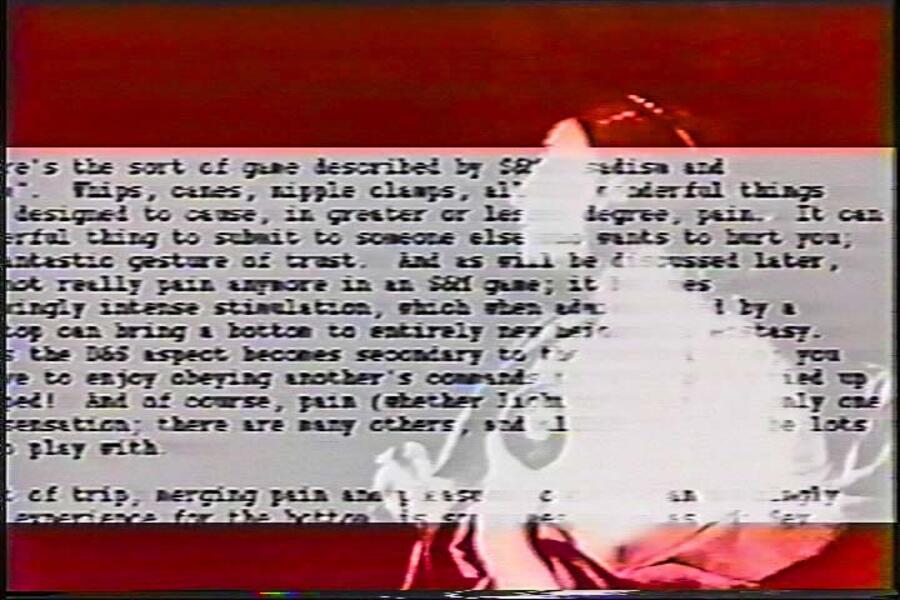 St. Agatha Francesco Furnini"There was nothing pornographic of obscene about any of the images I saw. Most of them, in fact, were simply digitized versions of 17th-century paintings and engravings - some of them quite famous - already in the Walters' collection. Ms. Konits had contrived present them in such a way that the viewer was made explicitly aware of the subliminal messages about sexual politics and gender coding that underlie much Baroque painting". Glenn McNatt, Message, Not Medium, is the Issue. The Baltimore Sun, 1L, 4L. (1996, April 28).
St. Agatha Francesco Furnini"There was nothing pornographic of obscene about any of the images I saw. Most of them, in fact, were simply digitized versions of 17th-century paintings and engravings - some of them quite famous - already in the Walters' collection. Ms. Konits had contrived present them in such a way that the viewer was made explicitly aware of the subliminal messages about sexual politics and gender coding that underlie much Baroque painting". Glenn McNatt, Message, Not Medium, is the Issue. The Baltimore Sun, 1L, 4L. (1996, April 28). -
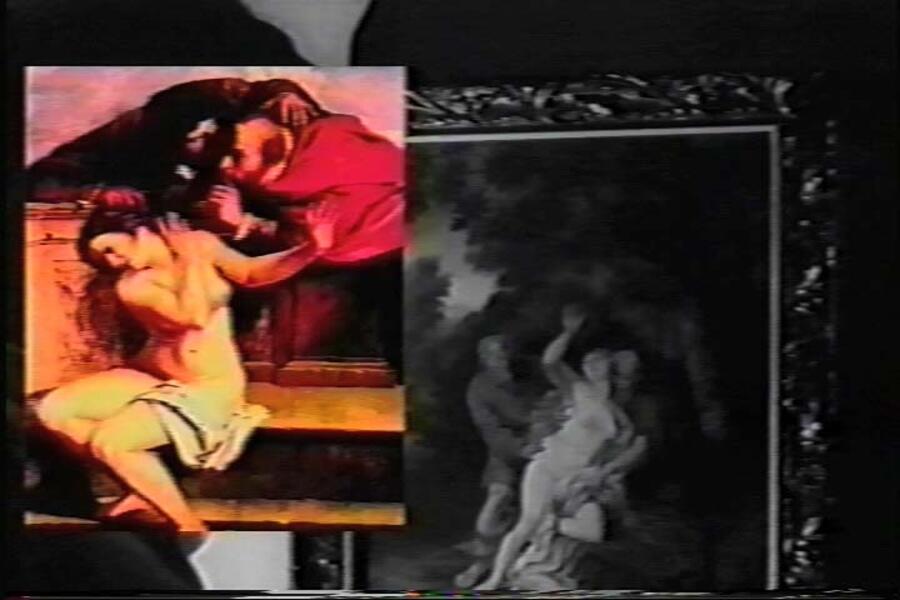 Susanna and the Elders, Artemisia Gentileschi/Single Frame from Psycho, Alfred HitchcockArt created on the Internet and experienced in the virtual realm is a uniquely parallel contemporary response to the concept of coextensive space and the transgression of boundary addressed by the Baroque artist. In the Baroque period the absolute authority of the Church and King was challenged, and the voice of the individual emerged. The confusion and anxiety resulting from the birth of the individual found expression in the eroticism of looking. The threshold for visual sensuality was tested and taboo subject matter was explored... Cindy Konits 1995
Susanna and the Elders, Artemisia Gentileschi/Single Frame from Psycho, Alfred HitchcockArt created on the Internet and experienced in the virtual realm is a uniquely parallel contemporary response to the concept of coextensive space and the transgression of boundary addressed by the Baroque artist. In the Baroque period the absolute authority of the Church and King was challenged, and the voice of the individual emerged. The confusion and anxiety resulting from the birth of the individual found expression in the eroticism of looking. The threshold for visual sensuality was tested and taboo subject matter was explored... Cindy Konits 1995 -
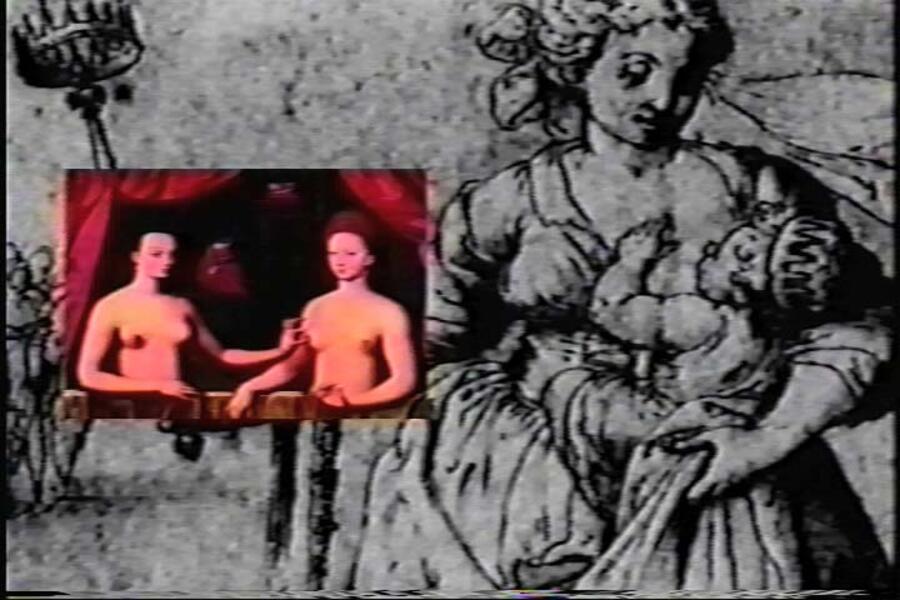 Gabrielle D'Estrees and Her Sister in a Bath School of Fontainebleu/Baroque Etching
Gabrielle D'Estrees and Her Sister in a Bath School of Fontainebleu/Baroque Etching -
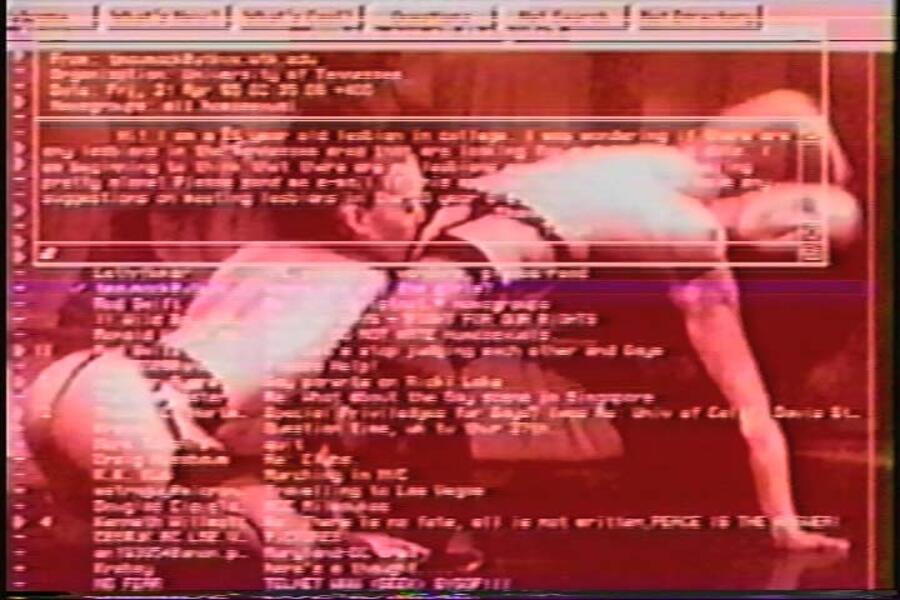 Internet Graphics
Internet Graphics -
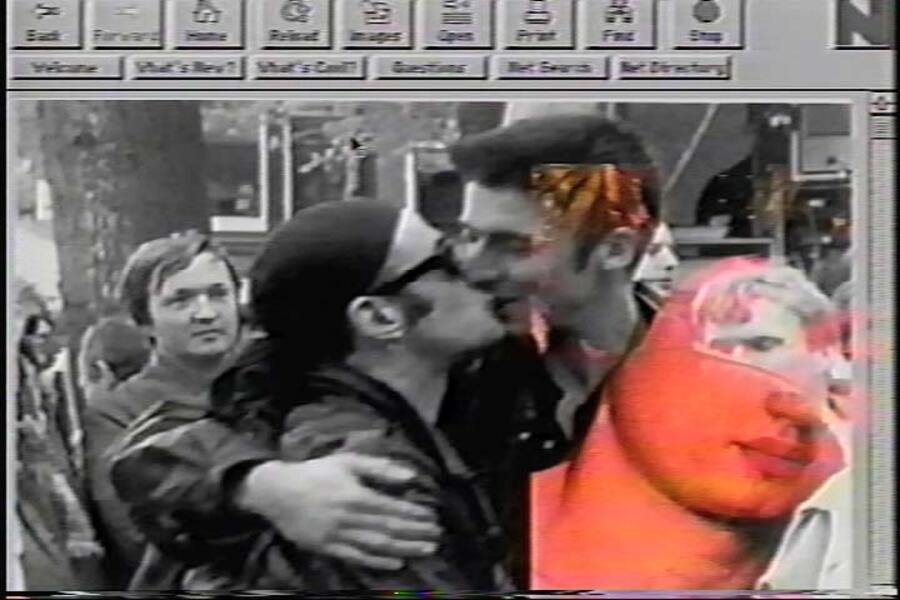 Bacchus by Caravaggio/Internet Graphics
Bacchus by Caravaggio/Internet Graphics
"HI, CAN I TAKE YOUR PICTURE?"
So it is my firm belief, that if you want, nowadays, to have a clear and distinct communication of your concepts, you have to use synthetic images, no longer words. And this is a veritable revolution in thinking…which can be compared to the one which gave origin to history. (Vilem Flusser 1988)
The following excerpts from the ongoing series beginning July 2016 “HI, CAN I TAKE YOUR PICTURE?” illustrate the present sensibility of the digital photographic image as means of communication, interaction, and sharing of common humanity with a stranger.
Cindy Konits
Baltimore, Maryland
New York City, New York
London, England.
-
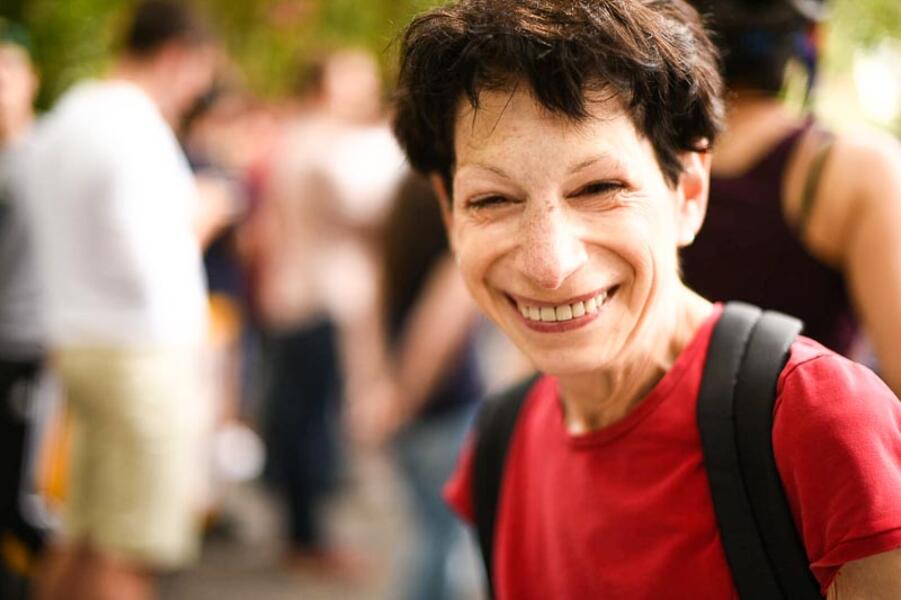 HI, CAN I TAKE YOUR PICTURE?New York City, New York
HI, CAN I TAKE YOUR PICTURE?New York City, New York -
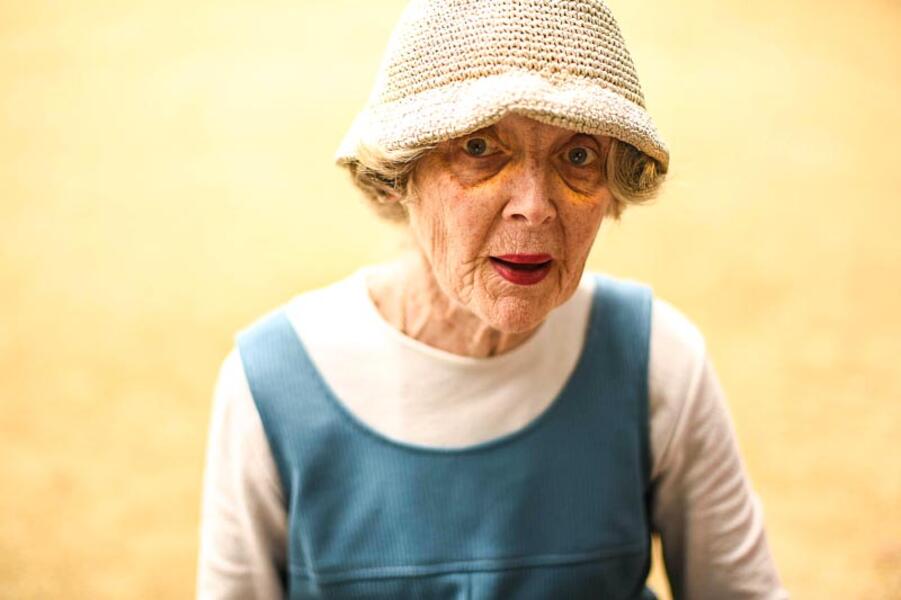 HI, CAN I TAKE YOUR PICTURE?New York City, New York
HI, CAN I TAKE YOUR PICTURE?New York City, New York -
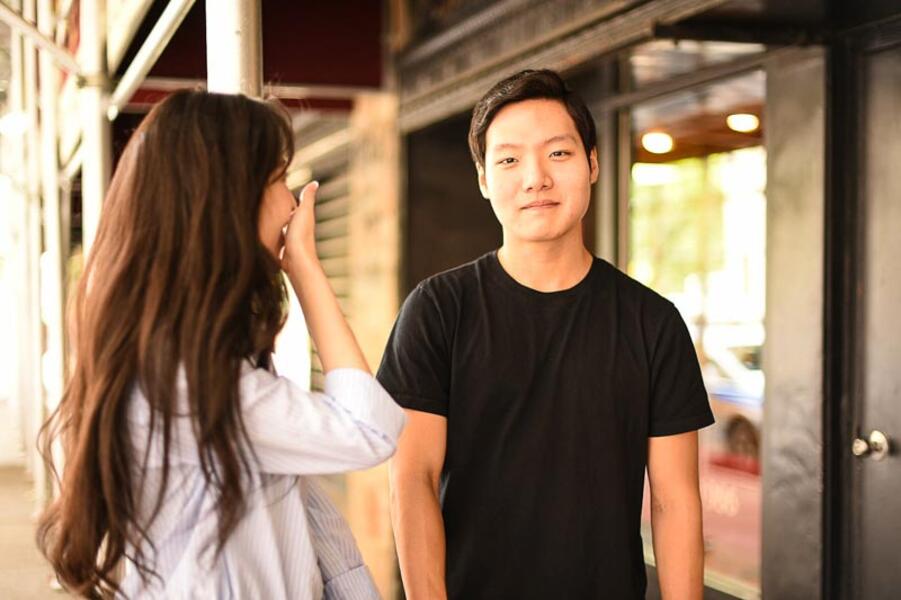 HI, CAN I TAKE YOUR PICTURE?New York City, New York
HI, CAN I TAKE YOUR PICTURE?New York City, New York -
 HI, CAN I TAKE YOUR PICTURE?New York City, New York
HI, CAN I TAKE YOUR PICTURE?New York City, New York -
 HI, CAN I TAKE YOUR PICTURE?Baltimore, Maryland
HI, CAN I TAKE YOUR PICTURE?Baltimore, Maryland -
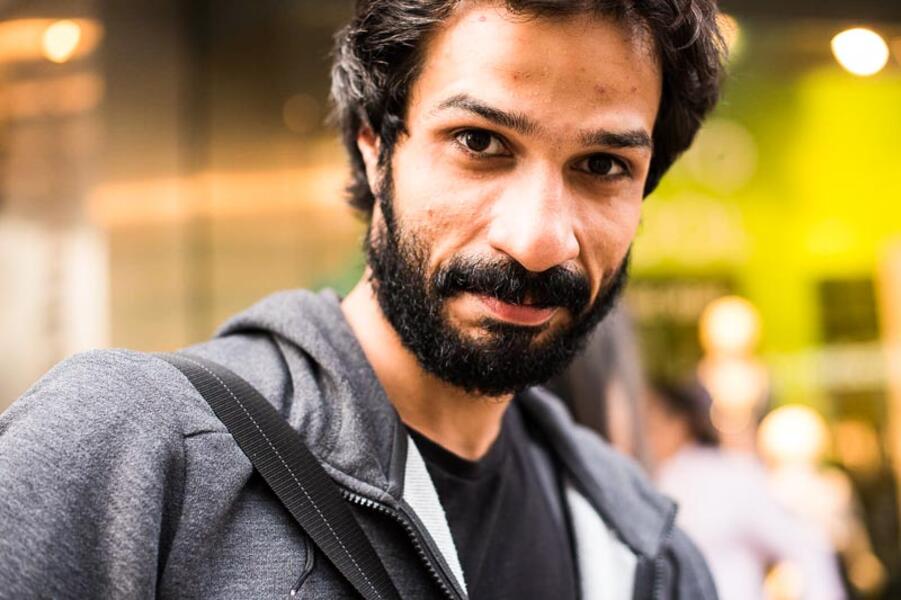 HI, CAN I TAKE YOUR PICTURE?London, England
HI, CAN I TAKE YOUR PICTURE?London, England -
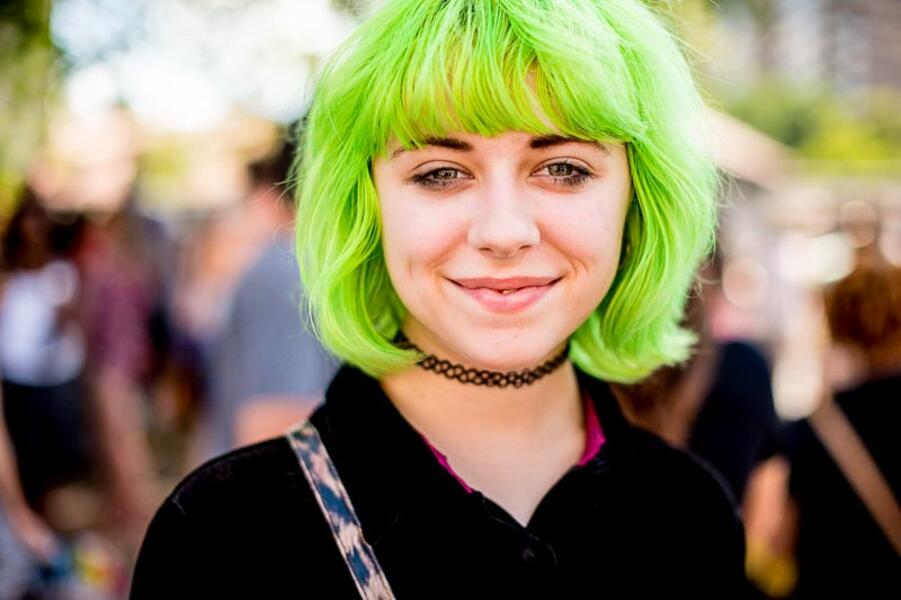 HI, CAN I TAKE YOUR PICTURE?Baltimore, Maryland
HI, CAN I TAKE YOUR PICTURE?Baltimore, Maryland -
 HI, CAN I TAKE YOUR PICTURE?
HI, CAN I TAKE YOUR PICTURE? -
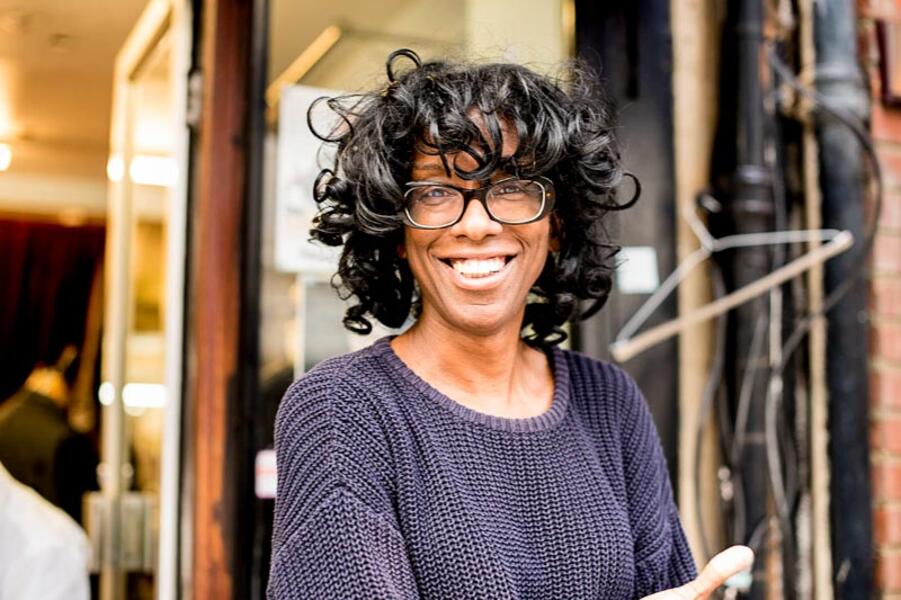 HI, CAN I TAKE YOUR PICTURE?London, England
HI, CAN I TAKE YOUR PICTURE?London, England -
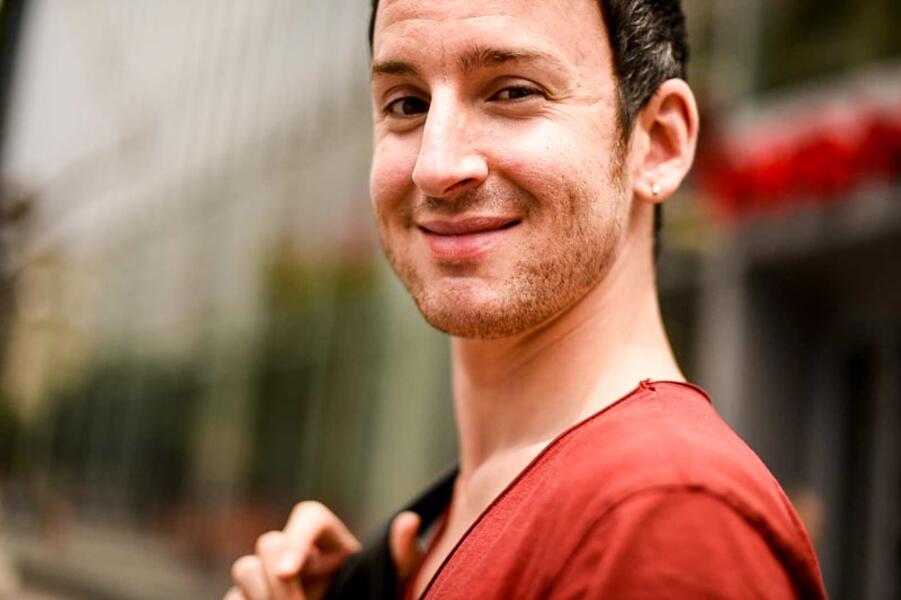 HI, CAN I TAKE YOUR PICTURE?New York City, New York
HI, CAN I TAKE YOUR PICTURE?New York City, New York

















